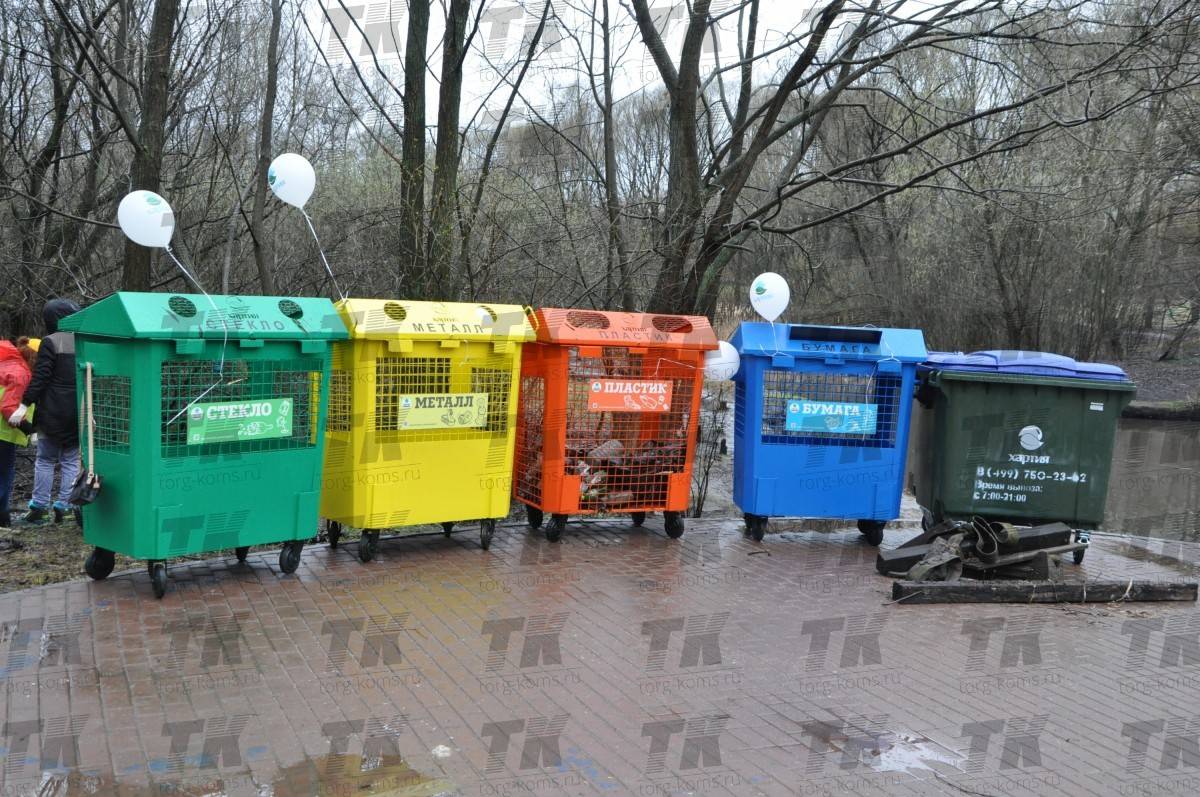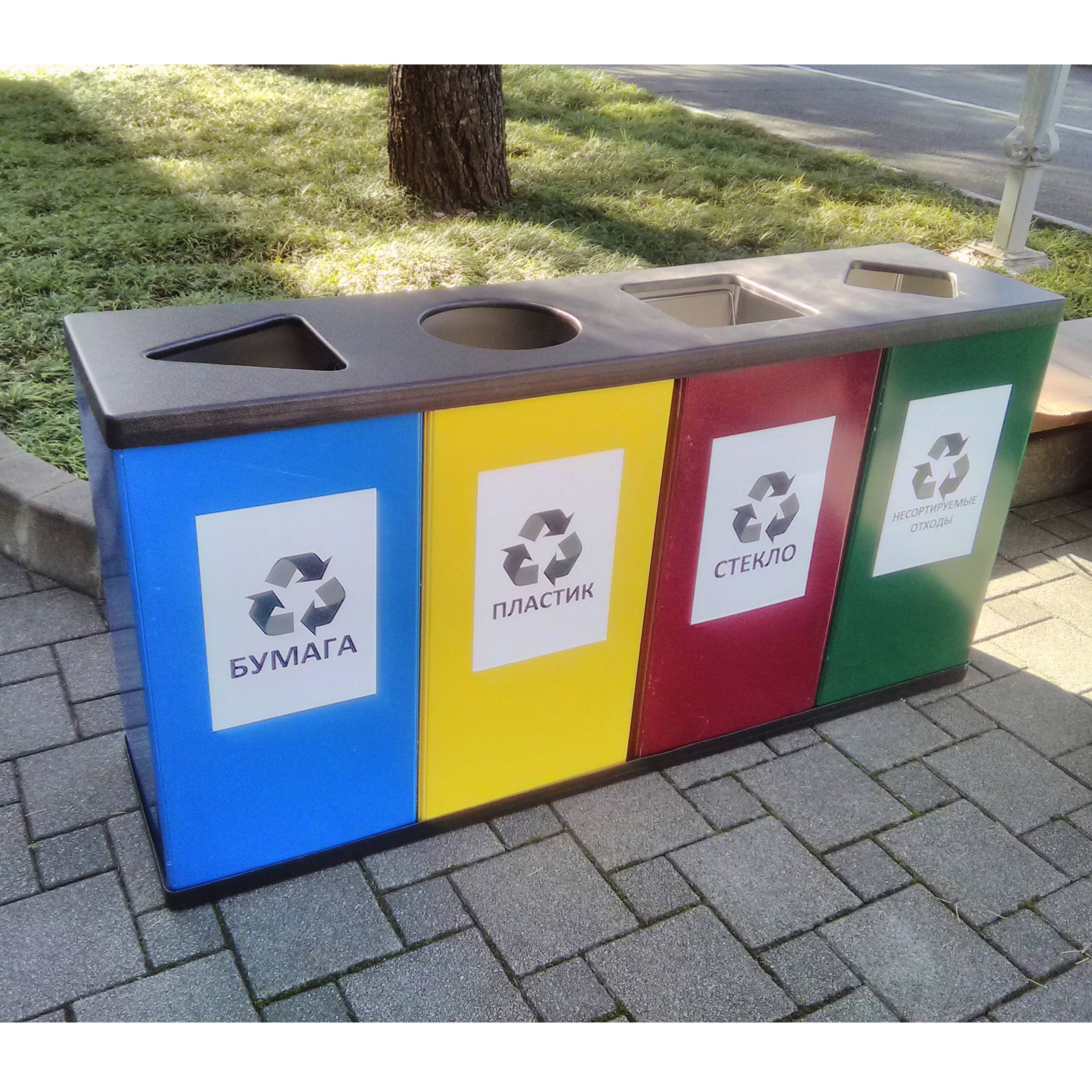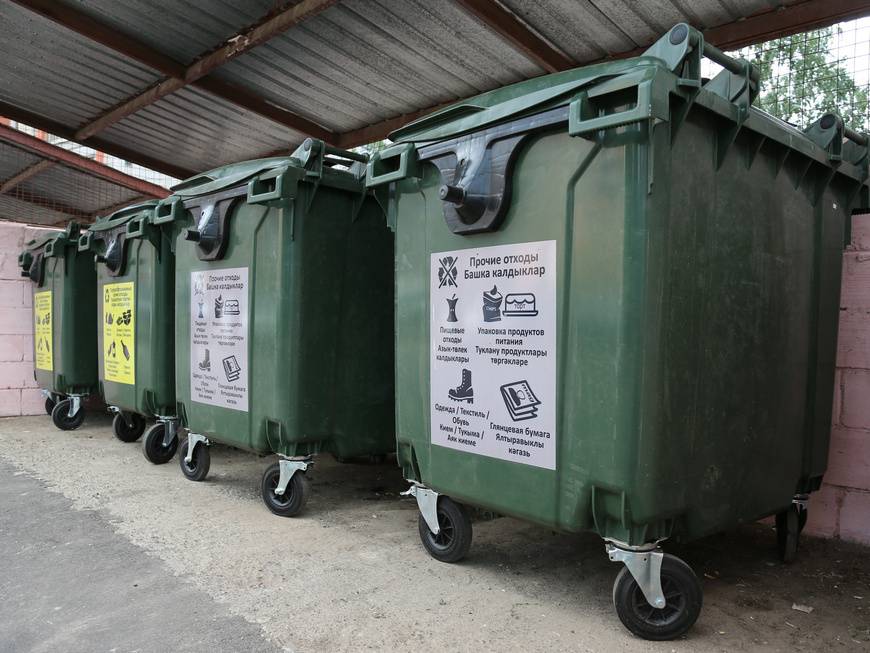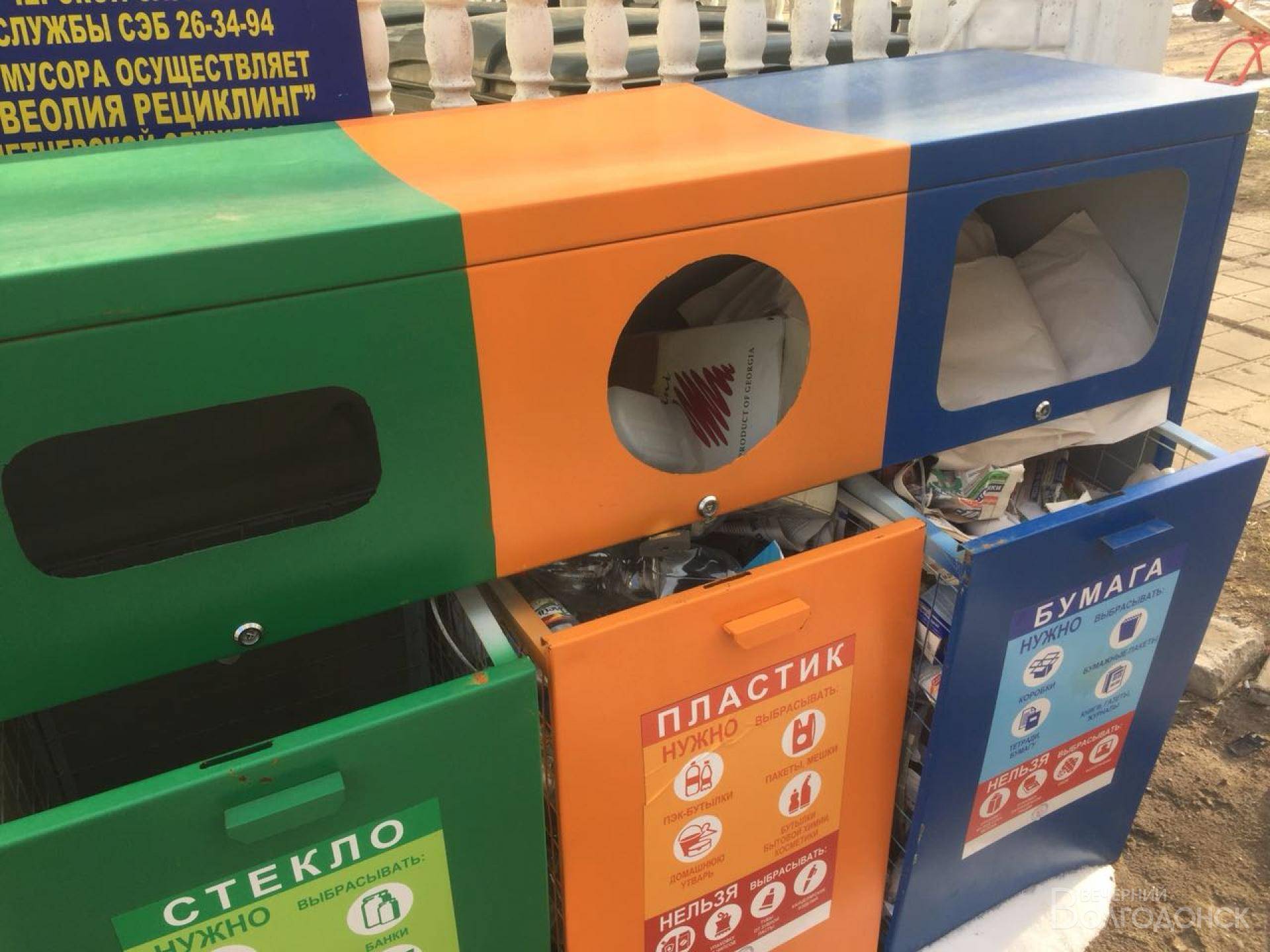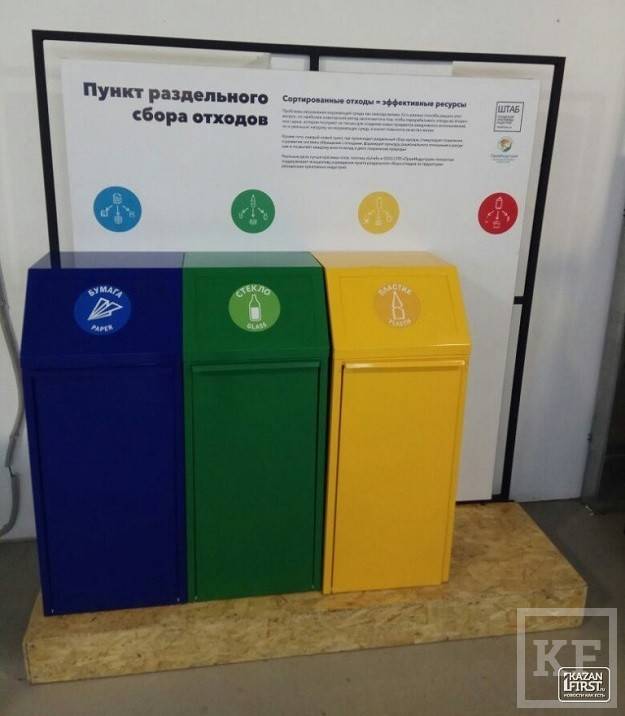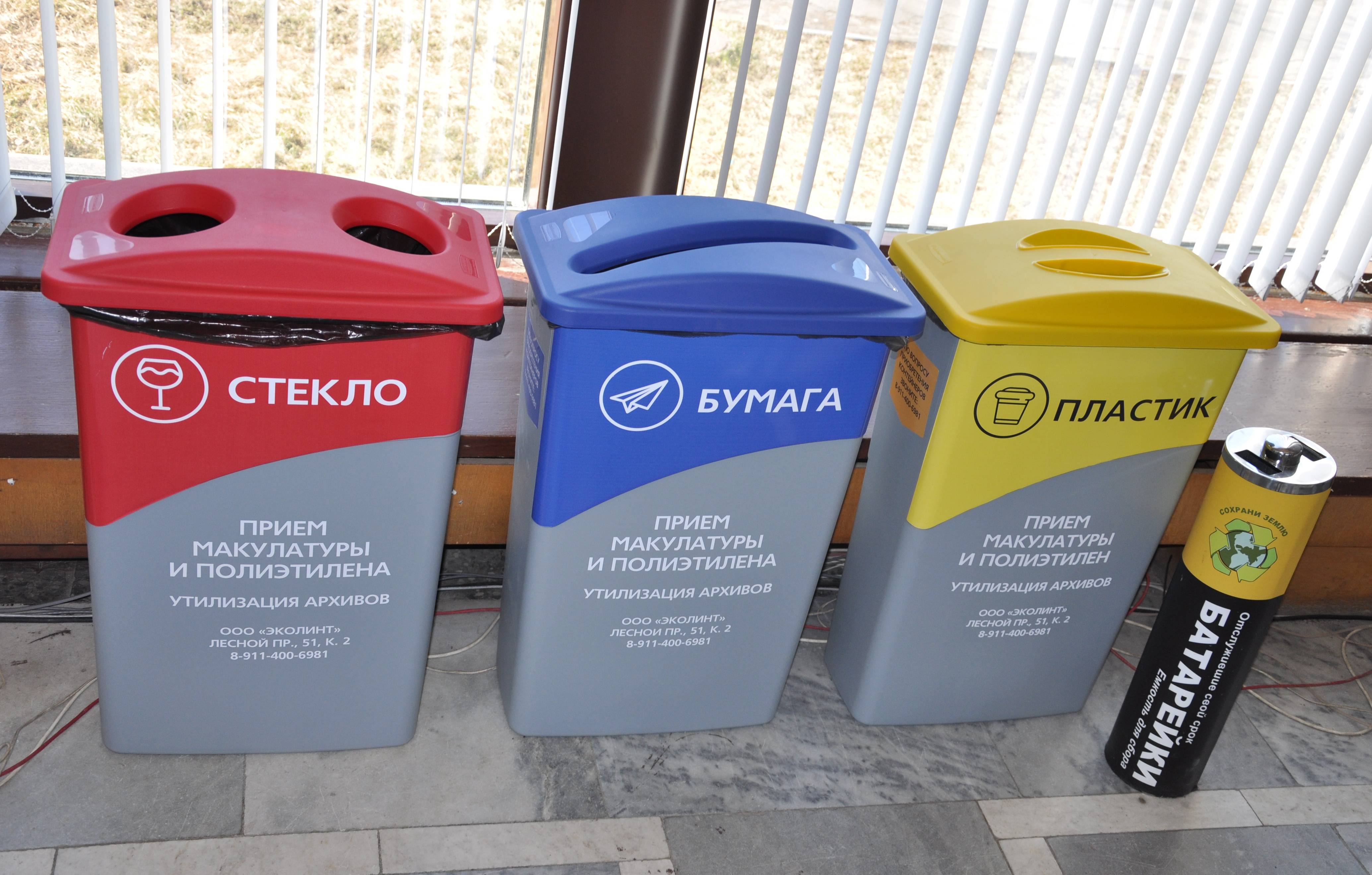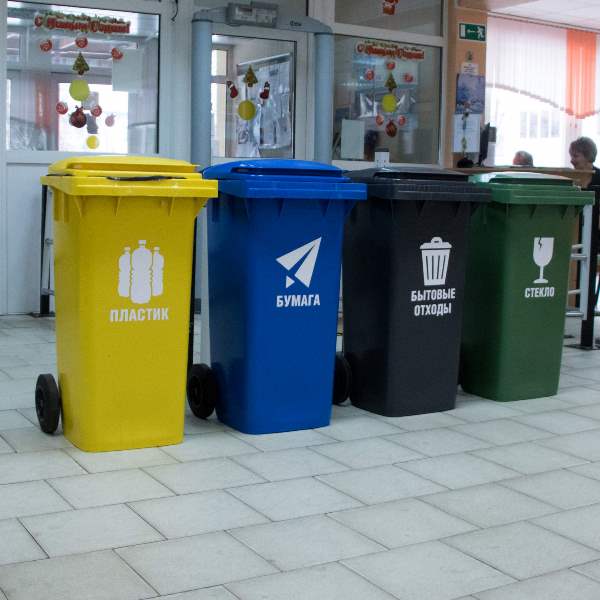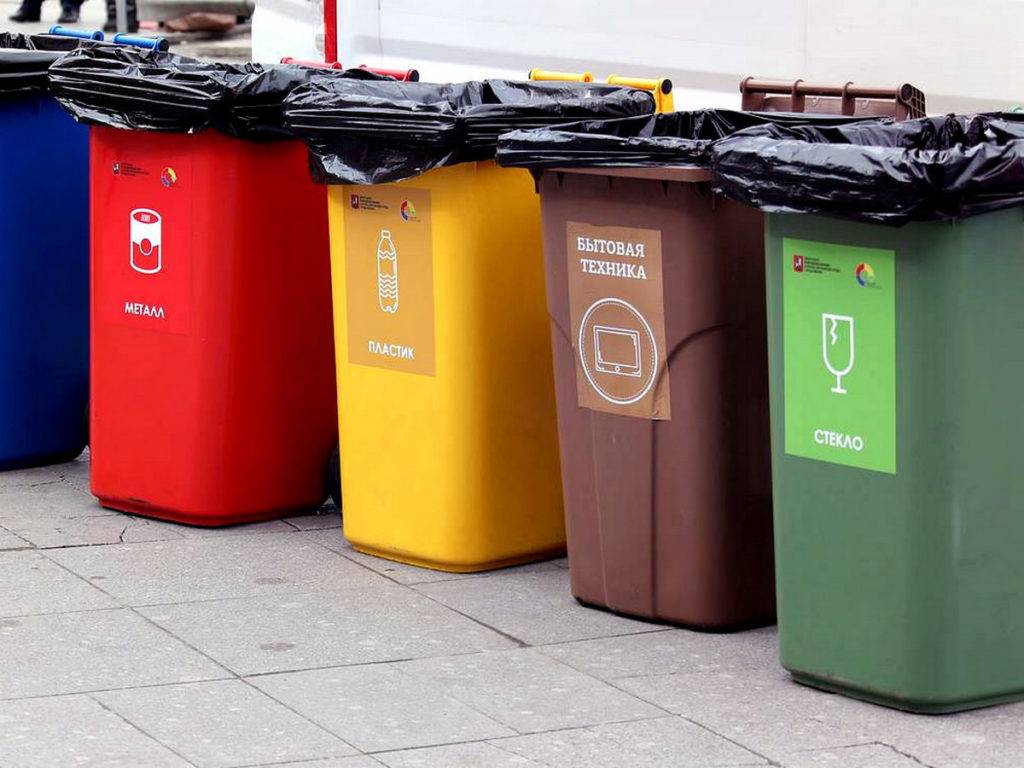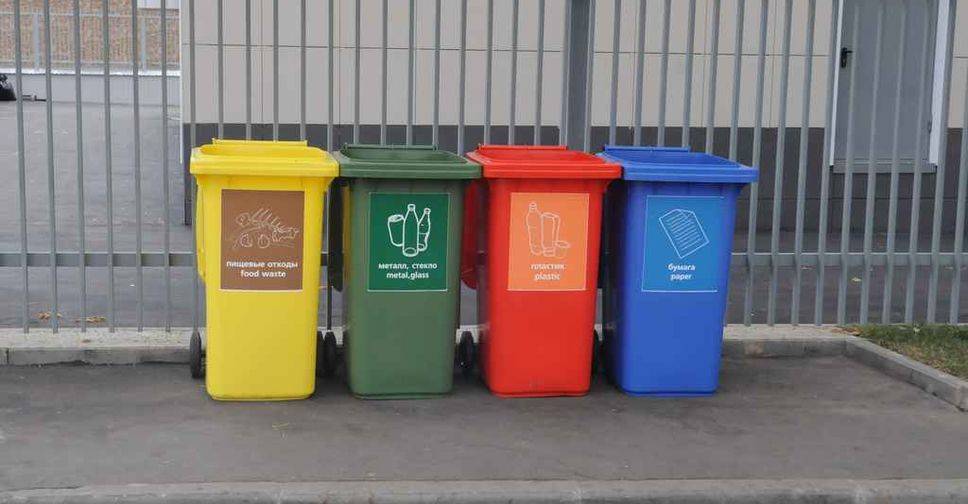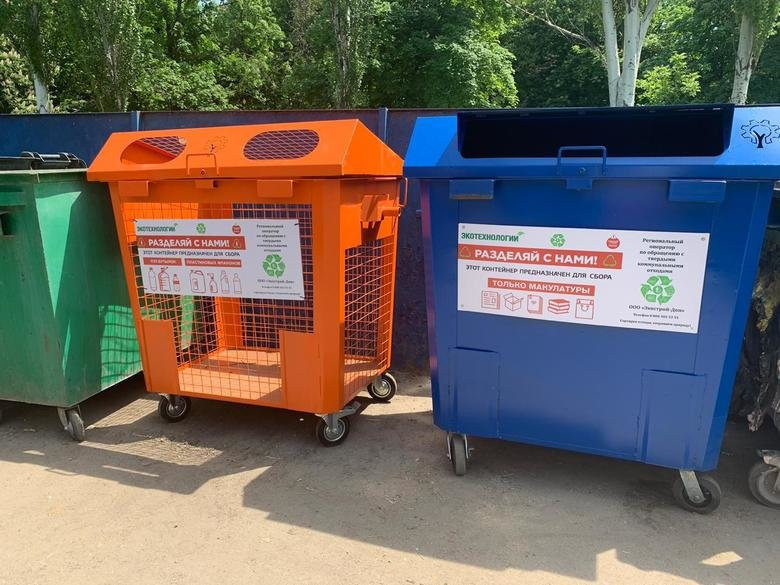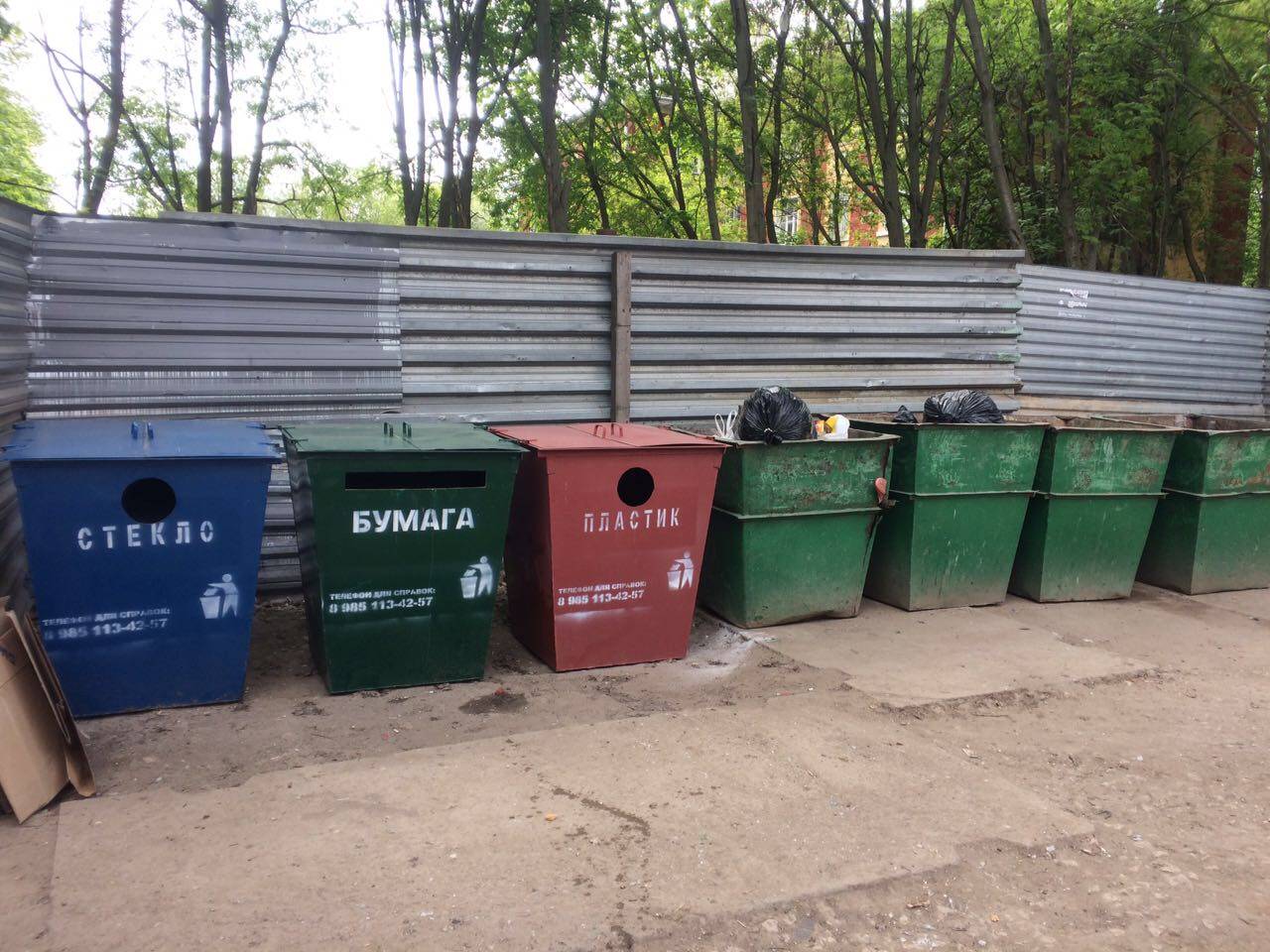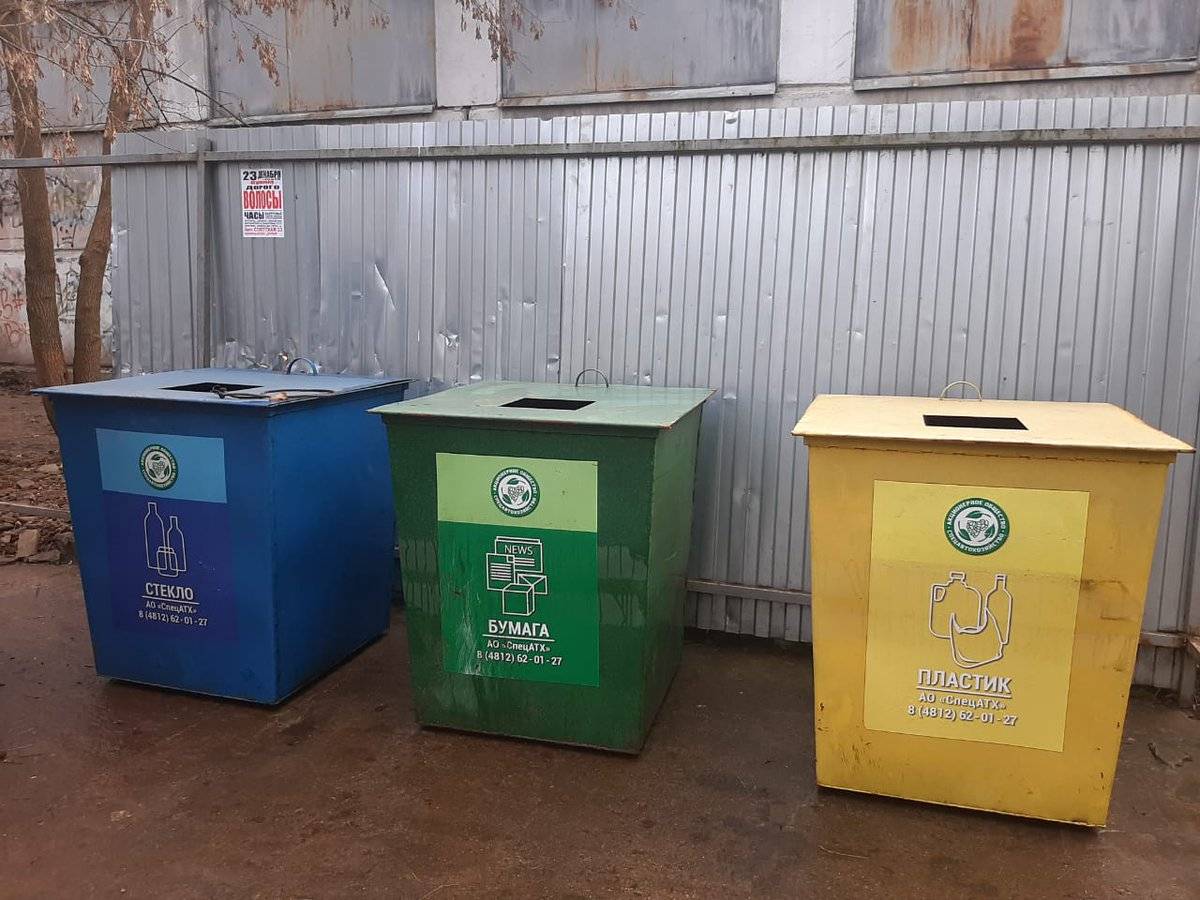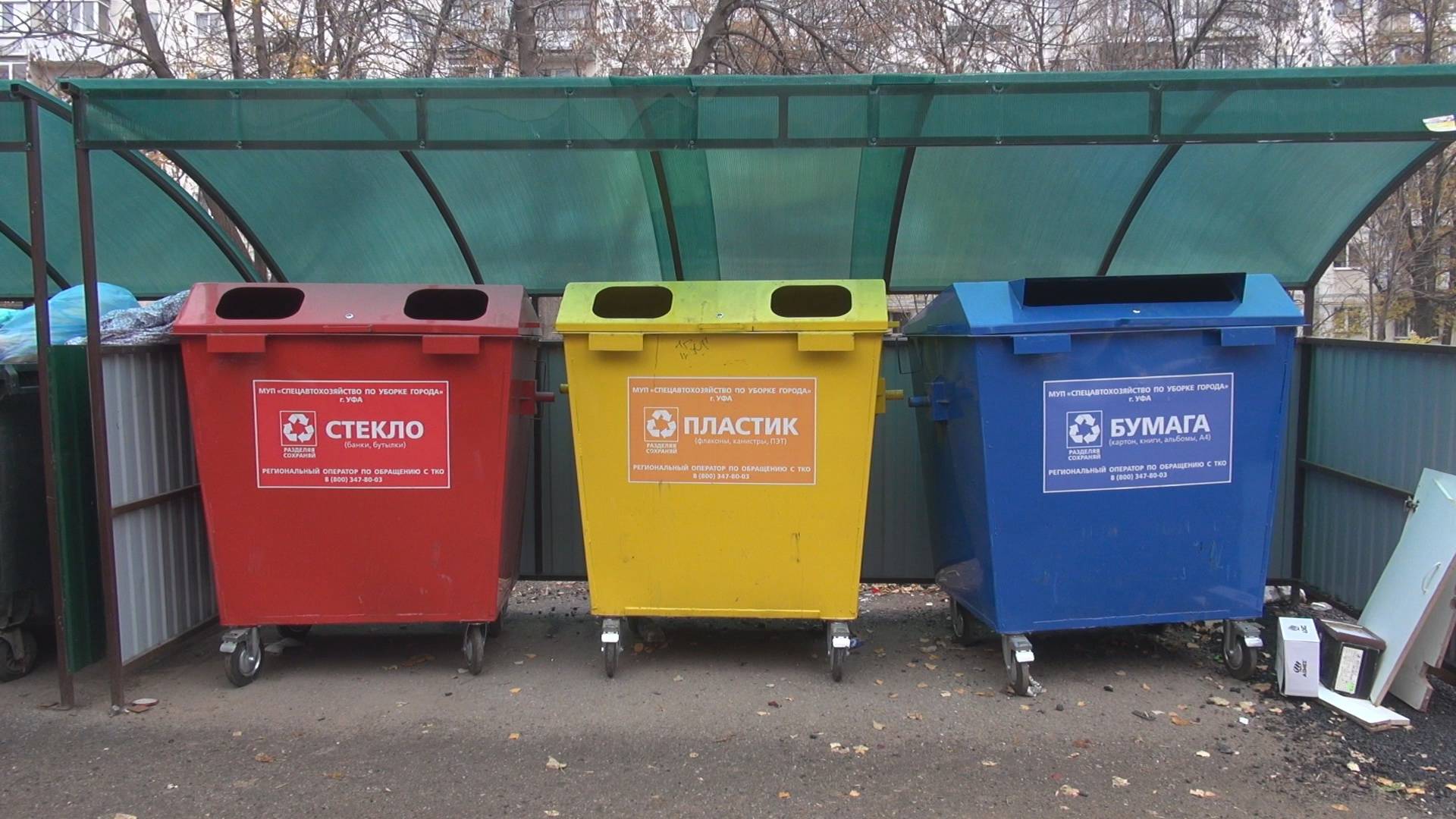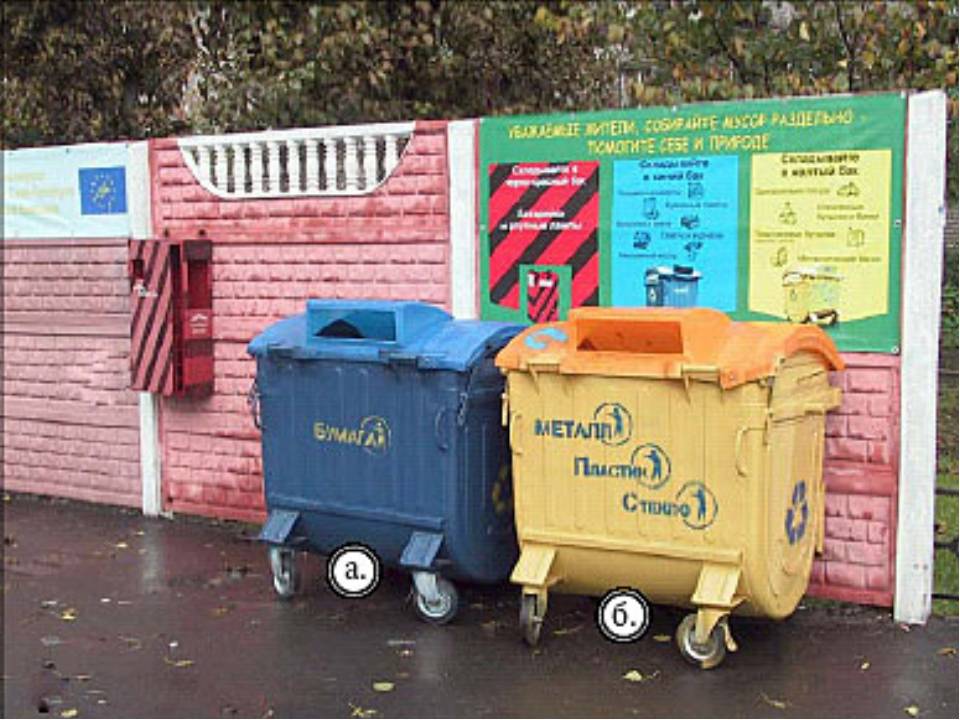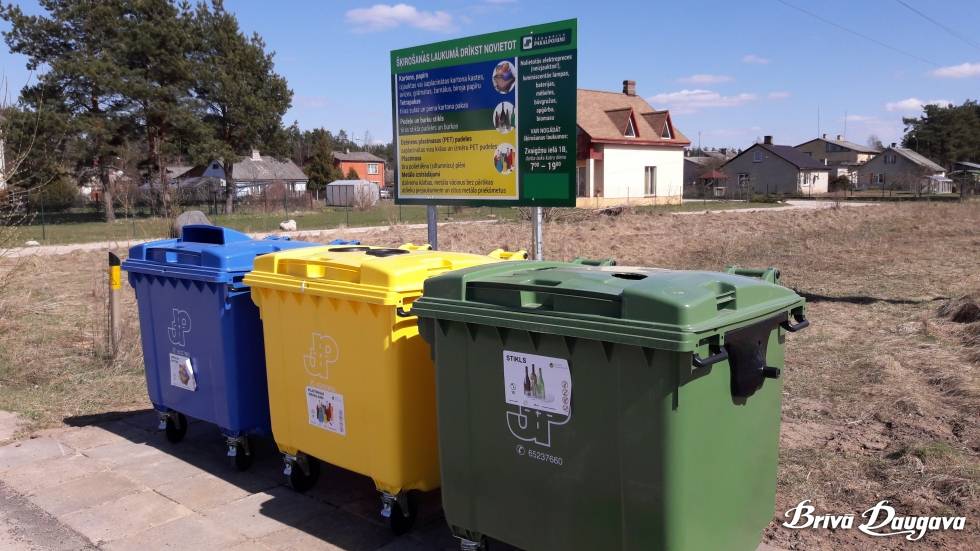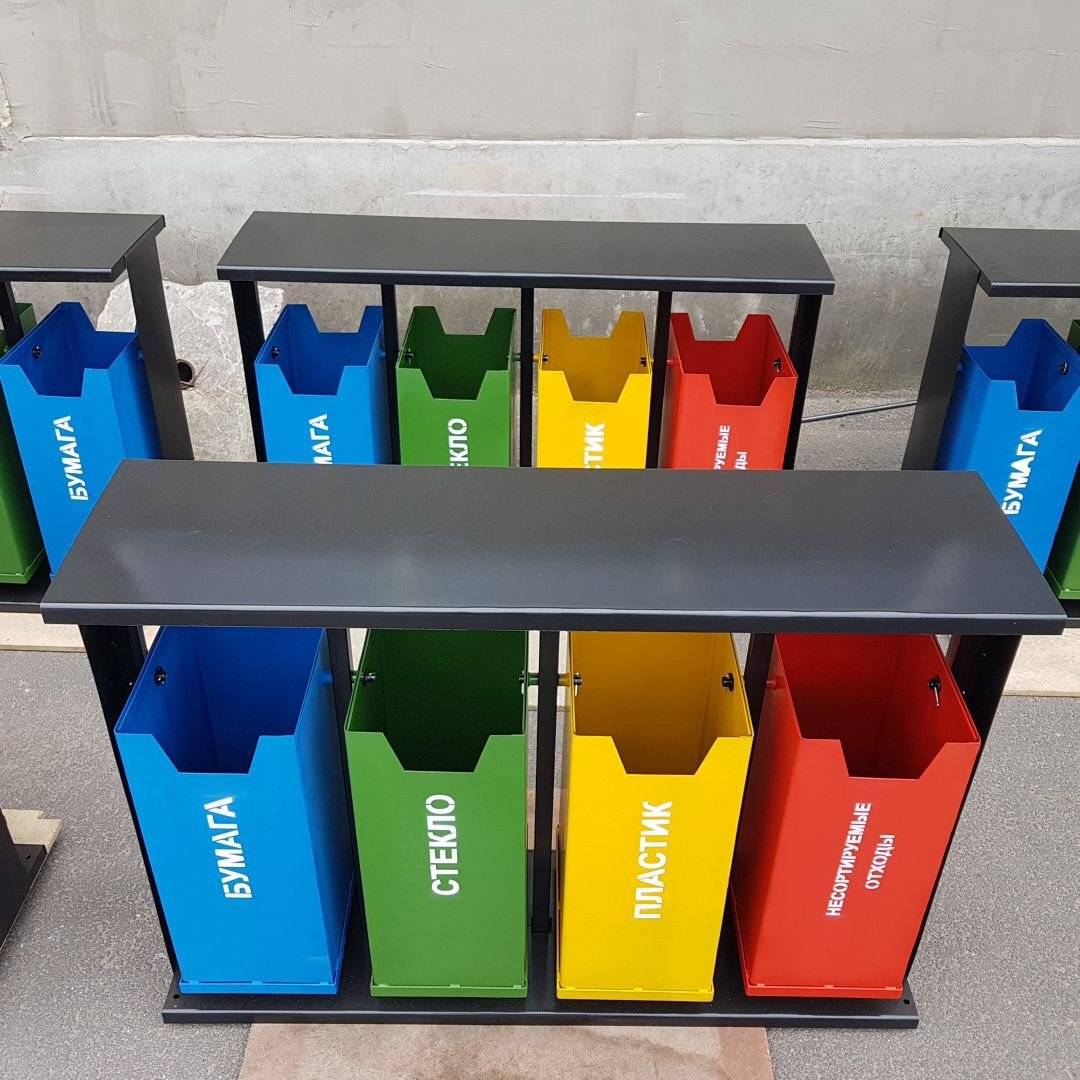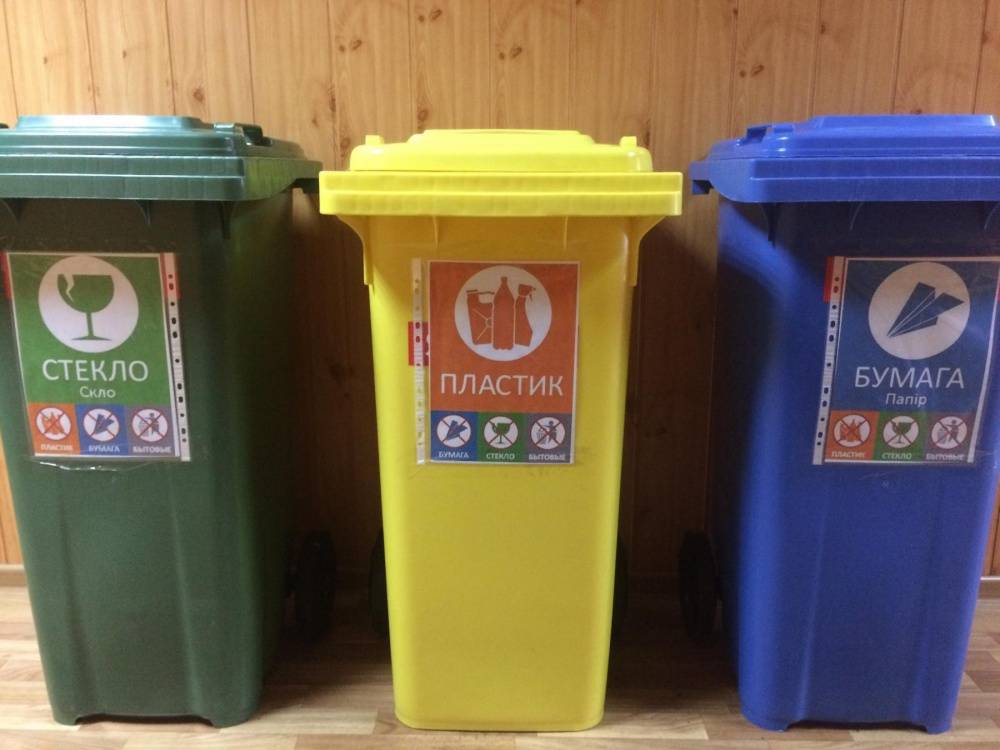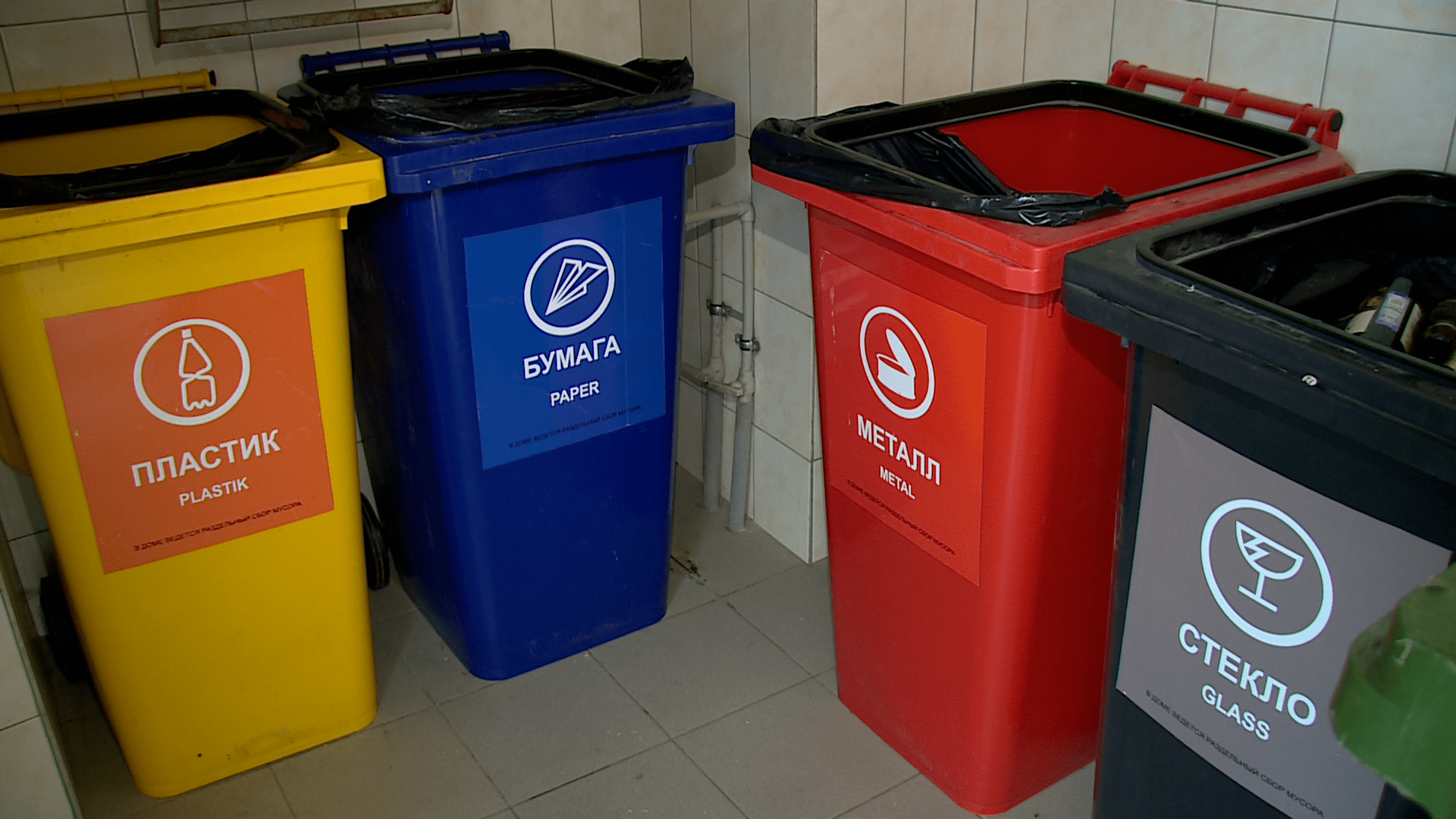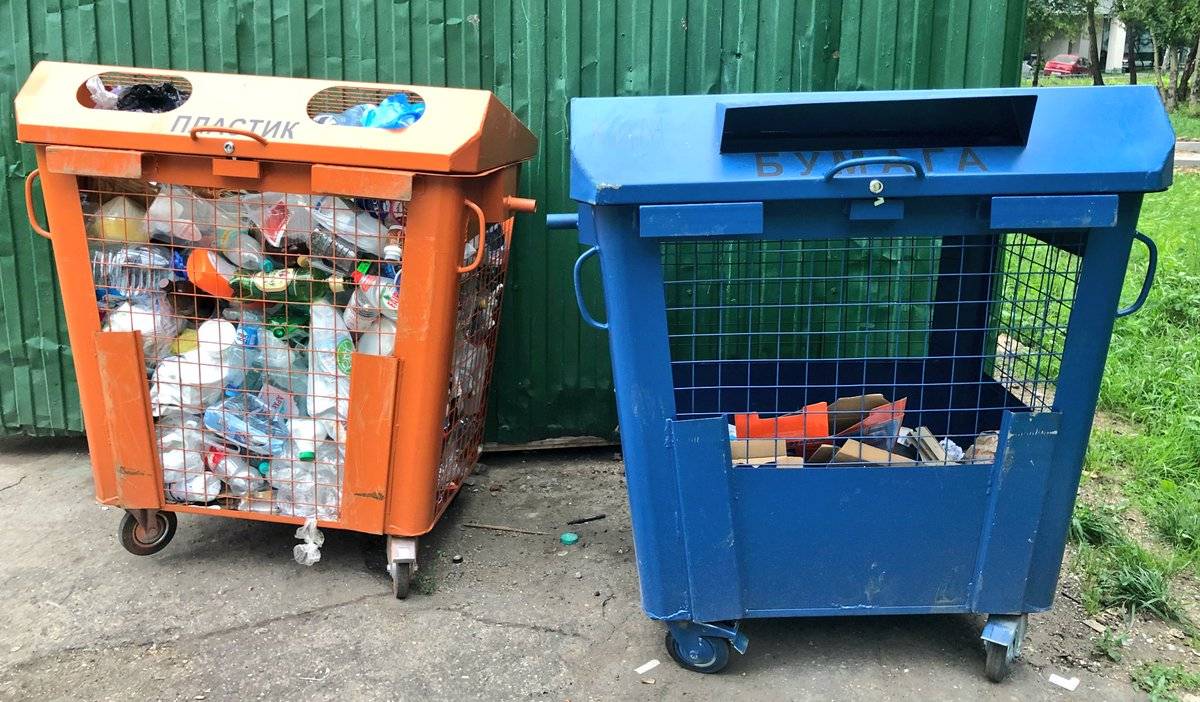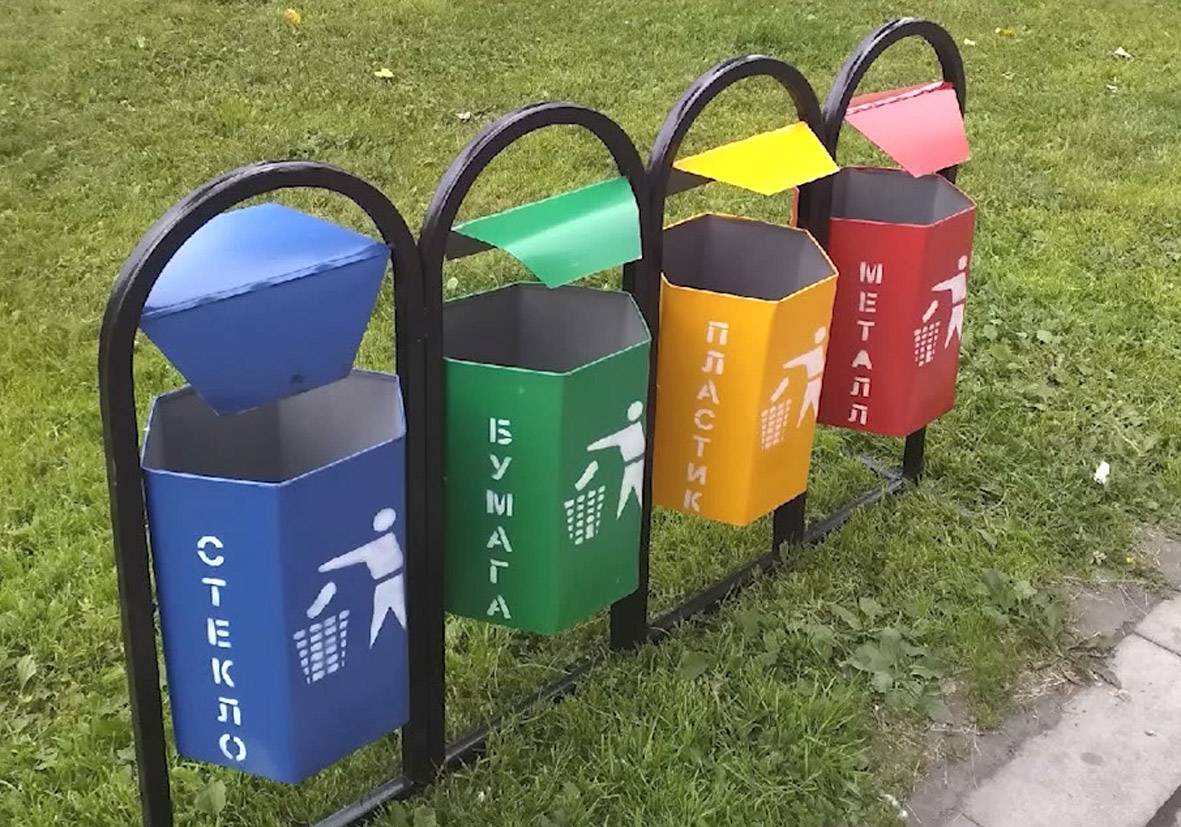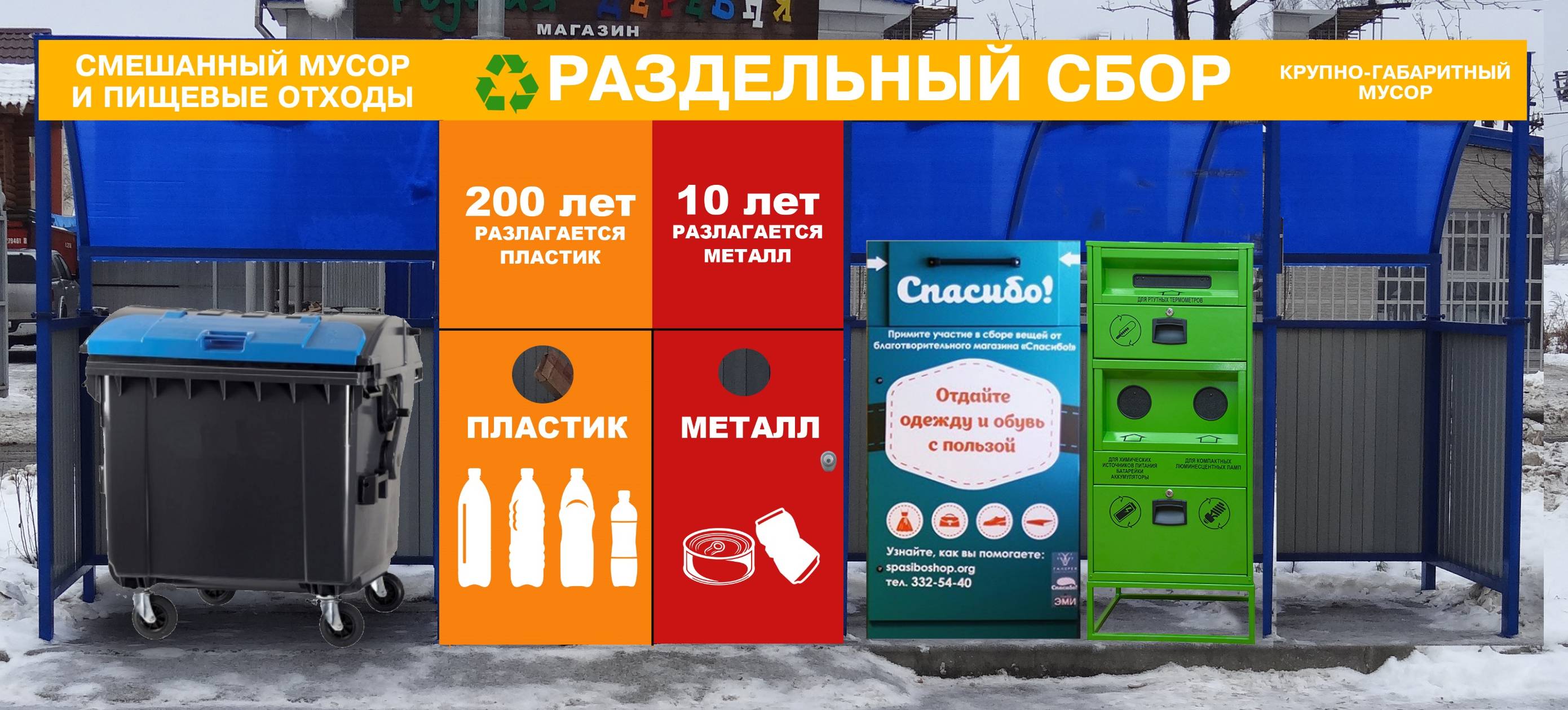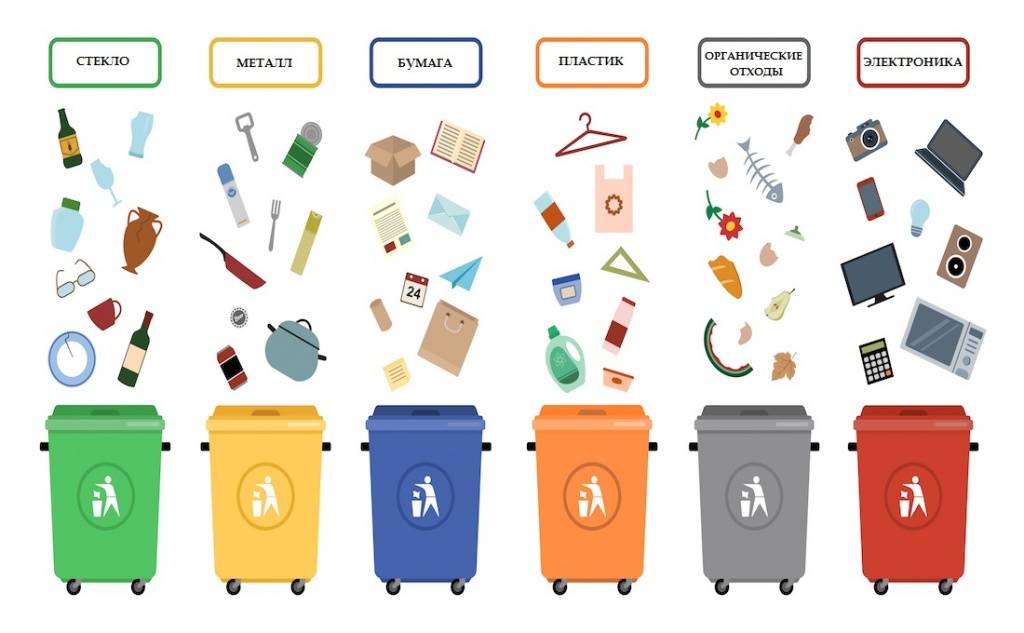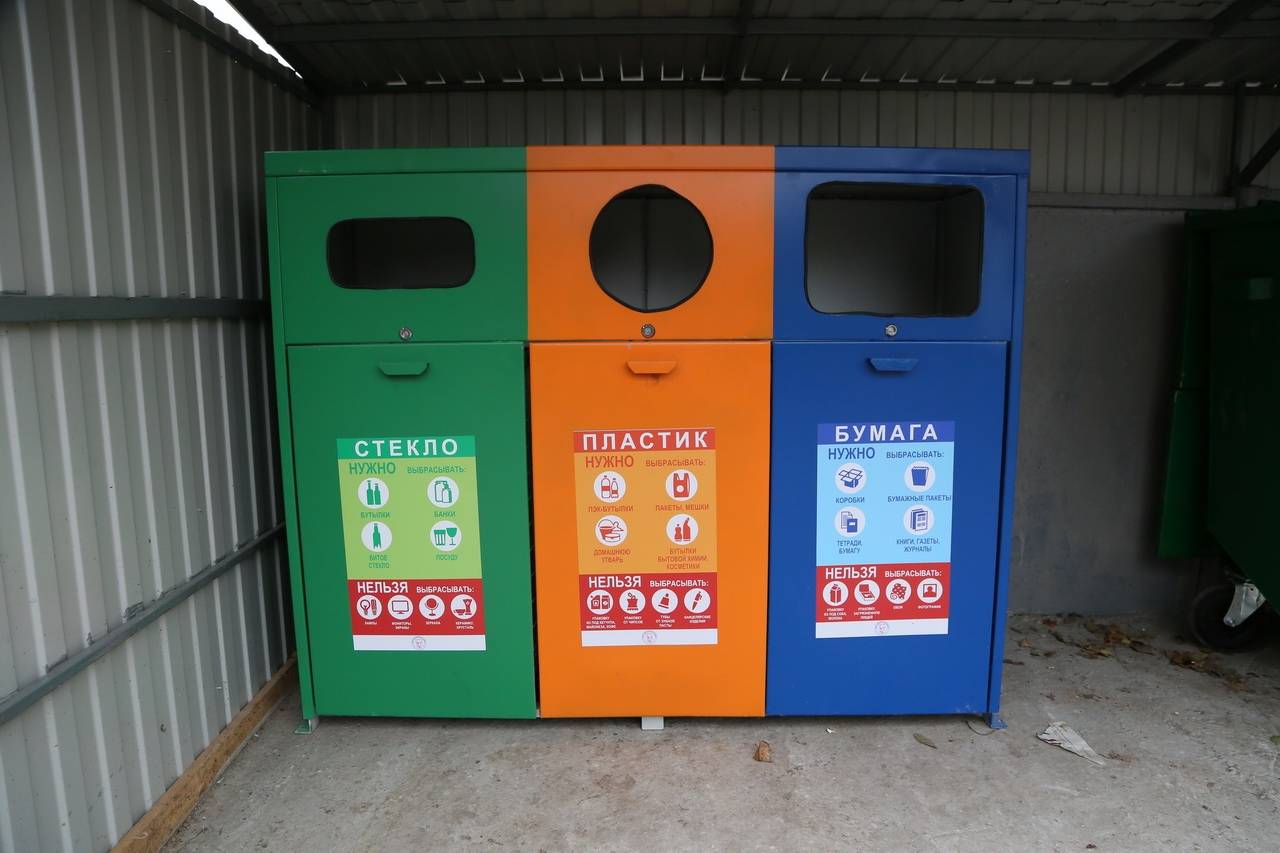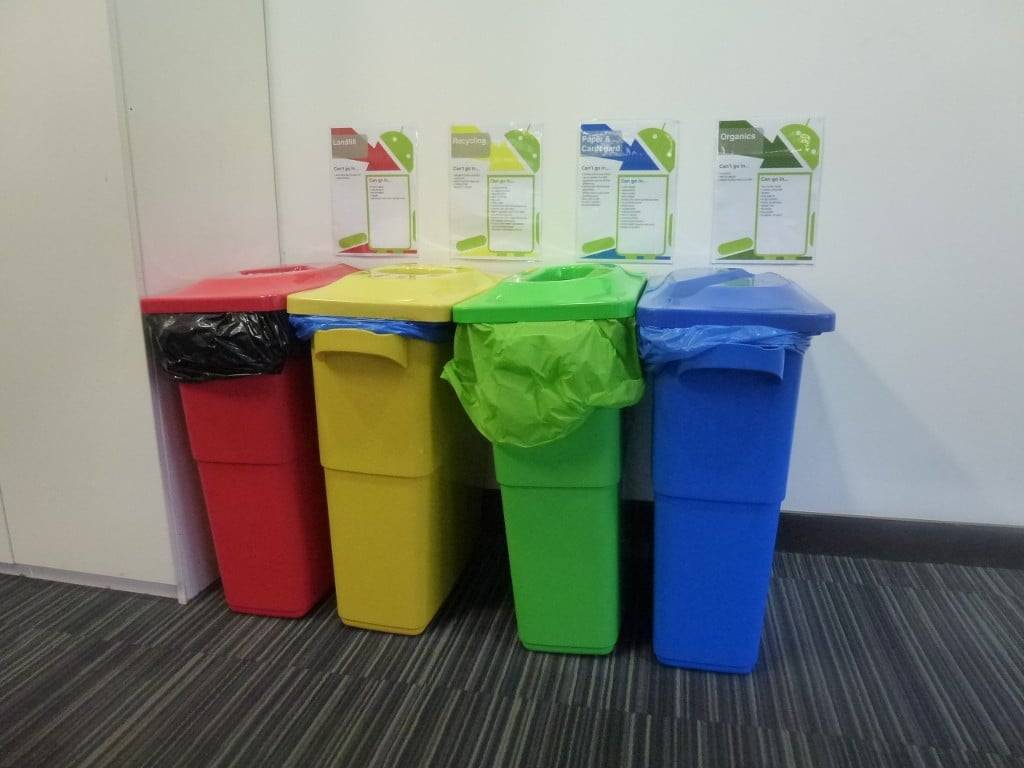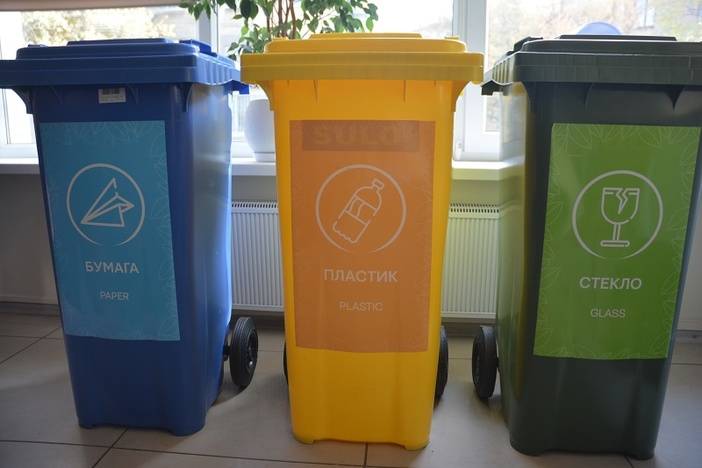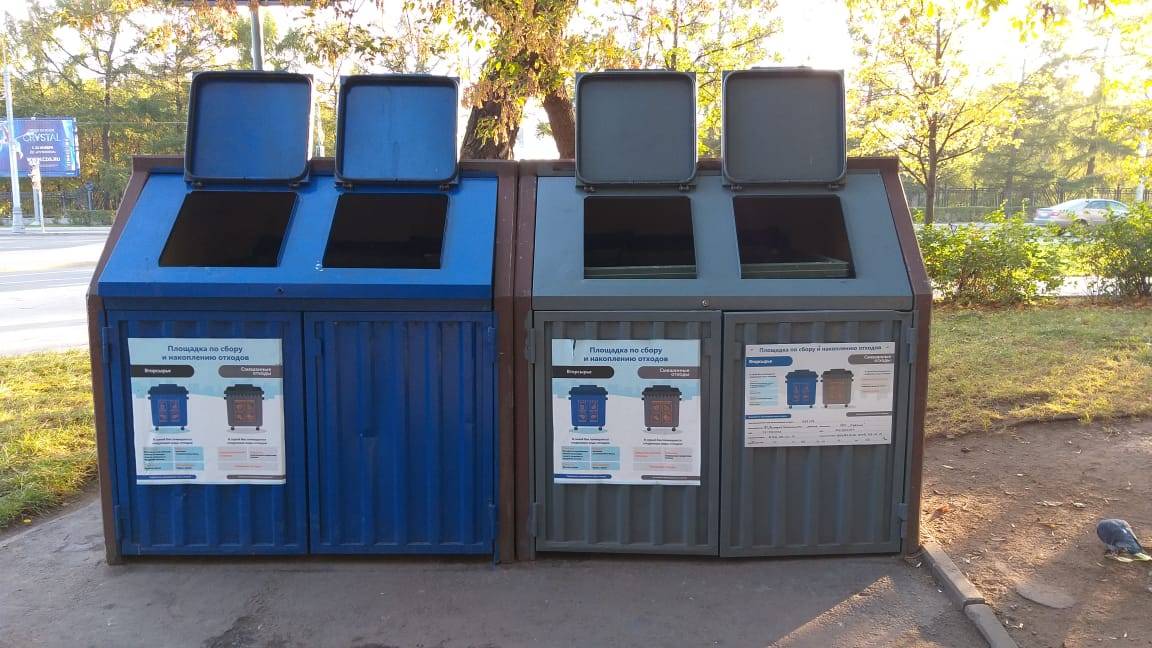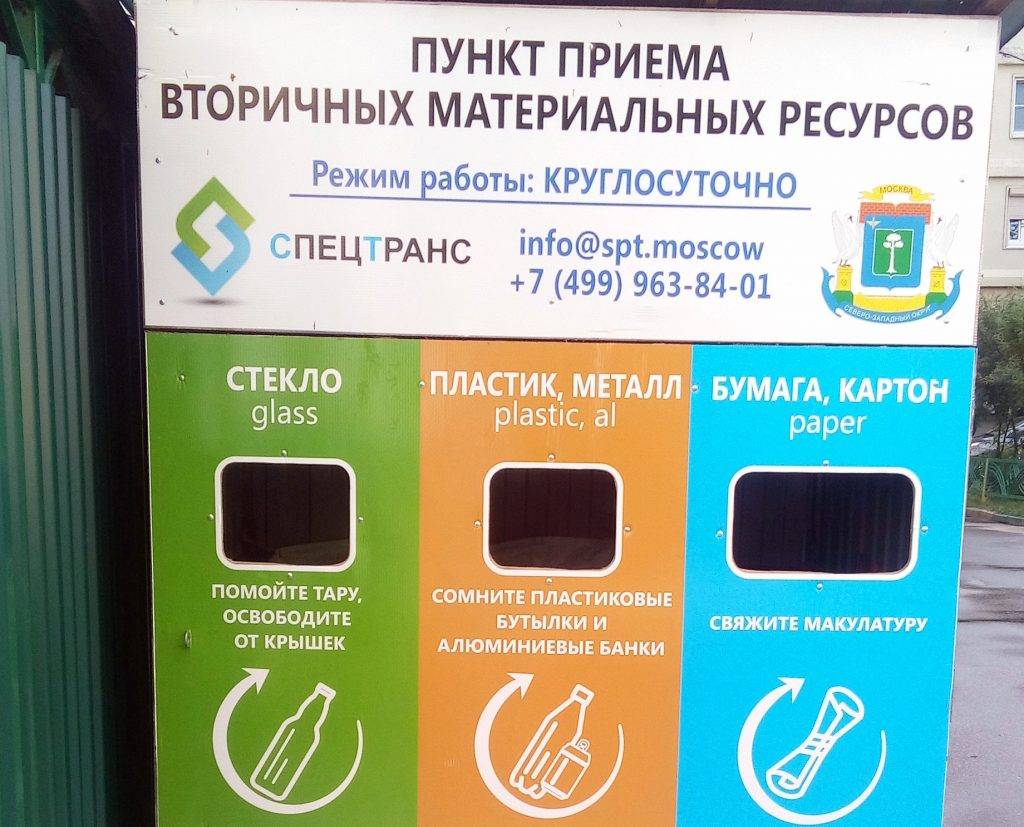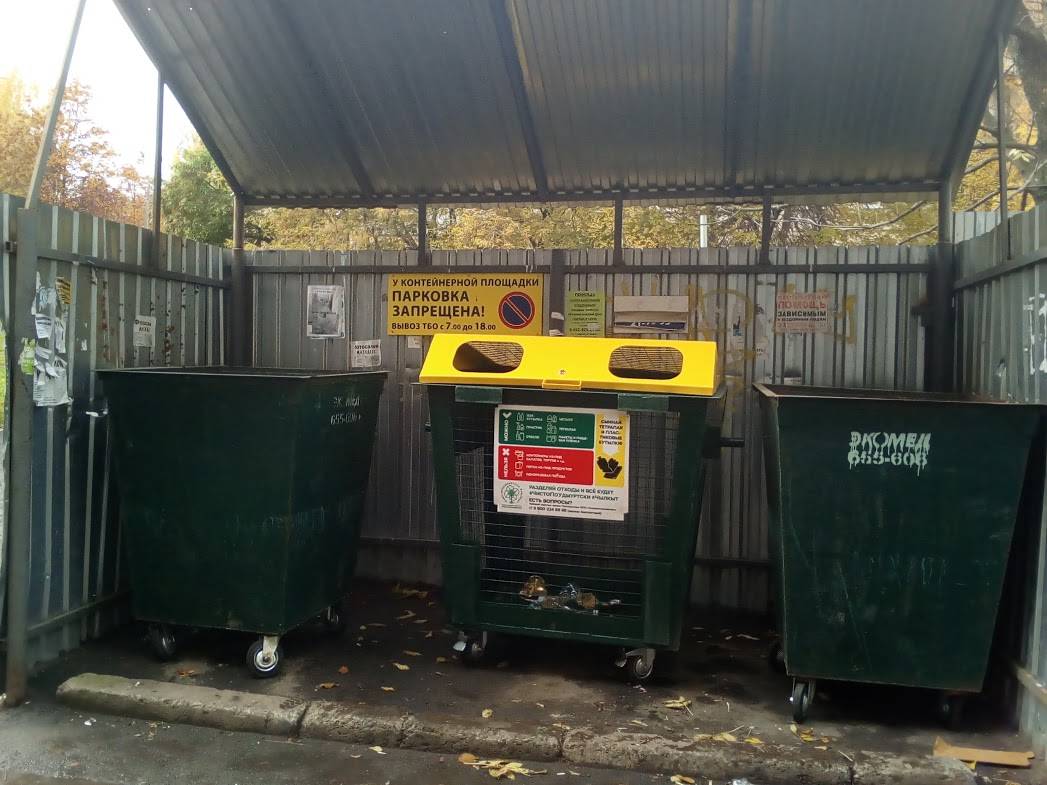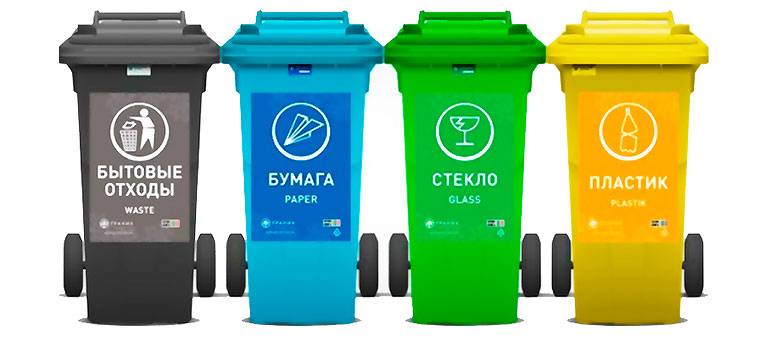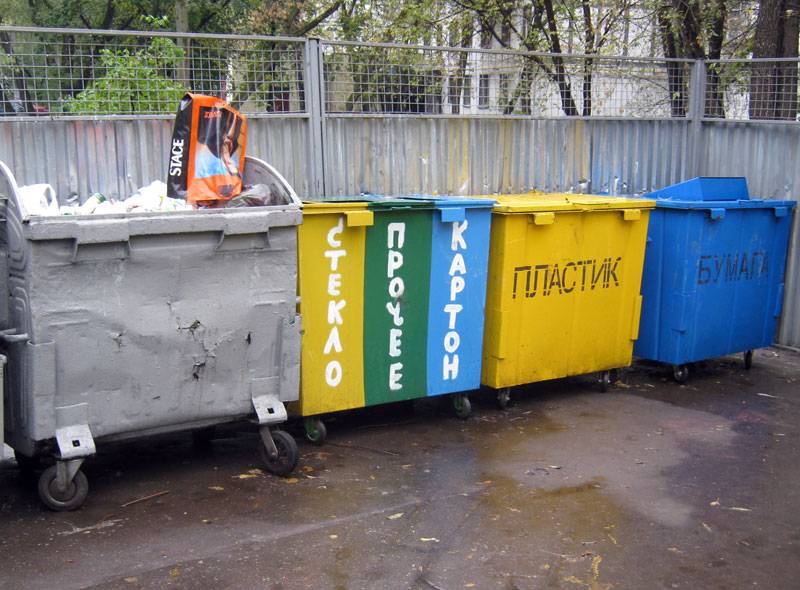What is separate garbage collection for?
Separate waste collection is a system in which household waste is sorted according to individual criteria. This allows the fractions to be used for recycling and further use. Sorting solves the following tasks:
- helps to isolate recyclable waste;
- reduce the cost of garbage collection;
- to reduce the area of the territories used for waste disposal;
- helps to return consumables to industrial production;
- allows to reduce indicators of general environmental pollution.
> Before the industrial revolution, there was no need for waste selection. The organic nature of the origin of household waste assumed rapid decomposition and destruction in a natural way. With the growth in the production of plastic, hard-to-decompose household items, the problem of recycling arose.
The first steps were taken in the second half of the 19th century in the United States. Then in Europe they began to study the practice of sorting, because industrial production has generated several large-scale garbage crises.
In the second half of the 20th century, a modern waste disposal and collection system was created in Germany. Special urns for collecting glass were installed on the streets, and after a few years, a multi-chamber system was installed, provided with appropriate collection explanations.
What's going on with garbage today?
The problem of separate waste collection in Russia is quite acute. This is due to the reluctance of the majority of the population to properly sort the thrown away things. As a result, functioning recycling enterprises equipped with modern equipment are not working at full capacity. As a percentage, only 10% of the total volume of residues is recycled and reused.
Waste processing plants in the Russian Federation
On the territory of the country there are more than 200 large enterprises with a technological base for accepting waste for processing. In Russia there are 50 waste sorting complexes and 10 plants for incineration of production and consumption residues. The total number of recycling plants is more than 1000. In addition, it is planned to build new objects of waste recycling infrastructure. But in order to provide enterprises with a sufficient volume of prepared waste materials, it is necessary to interest the population in programs for separate waste collection.
More than 90% of waste goes to landfills. According to the rules, the leftovers must be disposed of by pressing on specially equipped sites. Garbage must be poured in layers, leveled with a bulldozer and cover each layer 2 meters thick with soil. Provide water humidification in summer to avoid fires. Disposal is subject to solid municipal waste (MSW) that does not contain chemical, radioactive, toxic components. In reality, accumulators, batteries, mercury-containing devices, and flammable building materials are buried in landfills. This leads to environmental pollution, the ingress of hazardous substances into the air, waste and groundwater, and the atmosphere.
Trash can requirements
To collect waste, containers with certain characteristics are used:
- Resistance to repeated mechanical loads during waste disposal. For this, the design provides for the required wall thickness and upper edge. Metal products should have stiffening ribs at the corners to avoid deformation and loss of tightness.
- Anti-corrosion properties.
- Tight fit to the upper edge, without distortions and gaps, if equipped with a cover.
- Wheels must be able to withstand the declared weight of the waste during the pre-service life.
Containers should be equipped with areas for unimpeded loading and disposal of garbage.
Do you have to wash food packages?
The less technologically advanced the production, the more people are involved in sorting. This means that the cleaner the incoming waste, the better for the people working in the production. At the same time, it is clear that wasting liters of water on washing containers is not environmentally friendly. Moreover, after crushing and before remelting, plastic secondary raw materials go through a cleaning stage. Again, go to the site of the sorters / procurers in your area. For example, the EcoLine website says: “We remove food and liquid residues, rinse the container”.

It is better to rinse the container immediately after use, when with a minimum amount of water (and minimal loss of nerve cells, if you are especially squeamish), you can achieve the maximum effect.
Unusual home solutions
Manufacturers of products for home and everyday life offer home and apartment owners ready-made solutions that simplify the organization of waste disposal. After purchasing special devices, the owners can only organize the space and distribute the stages of disposal and storage among family members.
Trento ko
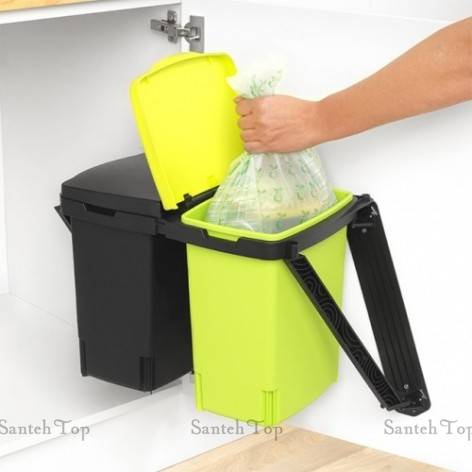
It is a simple pedal urn that consists of removable inner containers.
Advantages and disadvantages
the volume of each container is 11 liters;
the presence of a pedal for opening the lid.
there is no way to sort different classes of waste.
I like not like
Bttcher-Henssler
This is a design company from Germany that produces unusual items for home and office. The design duo oversees environmental activist organizations. The company produces multi-colored containers for storage and collection street debris.
Recycle set of bags

Designer Textile Bag Set for Home Use is a set of four multicolored eco-friendly household waste bags. Each bag with handles has a picture of the waste. Designers suggest throwing away wine bottles, paper, jewelry.
Advantages and disadvantages
design solution;
the ability to sort waste.
textiles have to be washed frequently.
I like not like
Husmus

The set consists of three containers of different colors.
Advantages and disadvantages
the ability to quickly sort waste;
you can place containers under the sink in the kitchen;
the colors are pleasing to the eye.
small volume.
I like not like
Totem
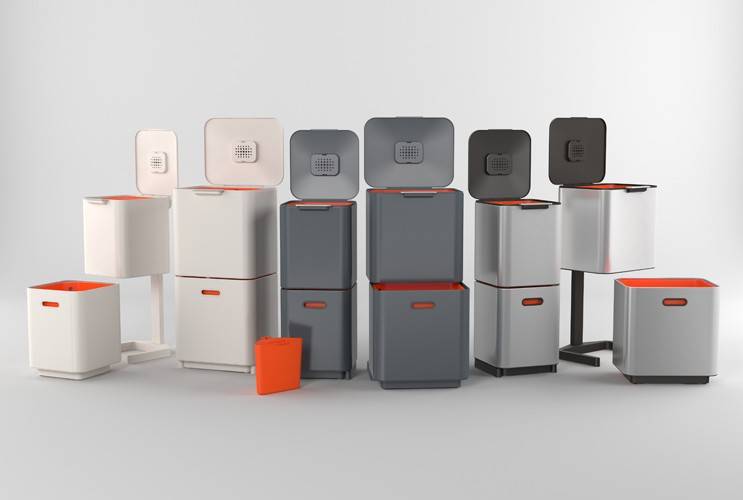
A trash can, which is a set of containers of different sizes.
Advantages and disadvantages
saves space;
intended for collection of different types of waste: from glass to organic matter;
made of high quality material.
requires constant control over sorting.
I like not like
Drop-front recycle bin

Italian manufacturers offer special, minimalistic containers with several holes for sorting household waste. They are small containers with lids extending from the surface that can fit into any space.
Advantages and disadvantages
modern design;
versatility;
environmental friendliness.
small size.
I like not like
Ovetto
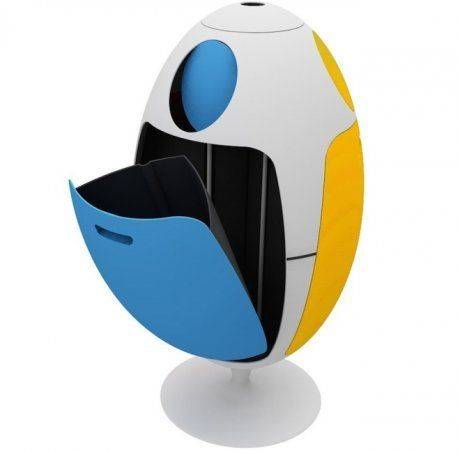
The basket by Italian designer Gianluca Soldi is a container with three alternately pull-out compartments for sorting paper, plastic and food waste. For plastic, a press is provided at the top of the structure, which helps to reduce the space in the basket.
The design was presented at the London Exhibition and received critical acclaim.
Advantages and disadvantages
the possibility of three-stage sorting;
saving space;
convenience.
high price.
I like not like
Trash bin Tri3

French designer Constance Hesse has developed a three-function bucket. The basic principles, according to the author of the project, are: movement, ease, amazement. The mechanism for opening the containers is based on pressing the pedal.
Advantages and disadvantages
the ability to sort waste into three types;
convenience;
saving space.
high price.
I like not like
Barcode recycle station

It is a state-of-the-art waste management system. The container has a special scanner window that reads the barcodes on the package. After reading the code, a special opening in the container is opened for the waste class.
Advantages and disadvantages
convenience;
modern design;
saving time.
the ability to throw away only the garbage that has a barcode;
high price.
I like it, I do not like it
The waste-folder

This is a disposable wastebasket that when folded is a simple folder. When unfolded, it takes the form of six disposable containers that are alternately fastened together.
Advantages and disadvantages
saving space;
ease of use;
recyclable;
low weight of the structure.
the impossibility of accumulating a certain amount of debris due to the instability of the structure.
I like it, I do not like it
Separating garbage into different factions is a problem facing humanity. A conscious attitude to the problem of waste disposal will reduce the release of harmful substances into the environment and save natural resources.
Share link:
First steps to separate waste collection
To change the current situation, it is necessary to instill in Russian citizens a culture of handling waste, to interest the population in the separate collection and sorting of waste. Some residents of large cities show conscientiousness, hand over the accumulated garbage to special collection points
They draw attention to the problem by a group of activists. You need to start separate waste collection from your home:
- See information on sorting waste into categories.
- Equip a bucket, container with multiple compartments for waste.
- Find out the location of the nearest waste collection points.
- Try to hand over the sorted waste yourself.
- Contact the management company with a request to install special containers in the local area.
It is clear to every conscientious citizen why garbage is separated - it is easier to recycle it this way. Separate waste collection (SSS) and recycling programs have not yet been implemented everywhere in Russia. After all, the garbage needs not only to be properly sorted before delivery, but also to be prepared - to free it from the remnants of food and drinks, wash, remove the labels from the bottles, twist the lids, compress the waste so that it takes up less space in the garbage truck. Not all people are willing to spend their time on this. Poem among the population it is necessary to carry out explanatory work, as an option to introduce a system of incentives for conscientious residents and fines for throwing out unsorted garbage.
Foreign experience
In Europe, waste separation has been practiced for a long time - individual elements of this system were used back in the fifties of the last century, and the practice of waste separation began to be fully applied in the eighties in the Netherlands. Today it is one of the cleanest countries, and there are no more than two dozen landfills left in it (before the introduction of waste sorting and recycling, there were more than two hundred of them).
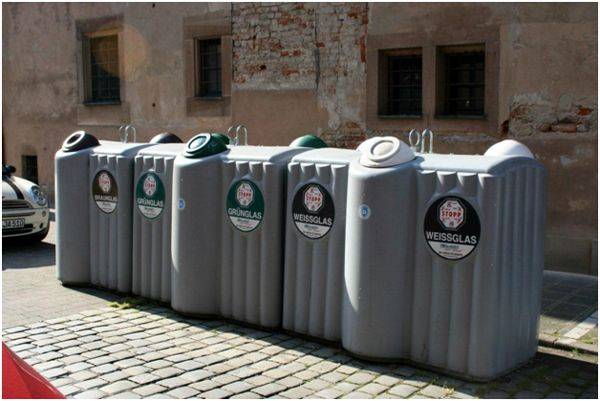
In most developed European countries, the "garbage" industry is supervised by the state and regulated at the legislative level. In Germany, for example, businesses and individuals caught negligently treating waste are required to pay a "tax on disgusting" - contributions to the budget, which are then spent on the elimination of unauthorized landfills.
In Switzerland, waste separation is also enshrined in law: you need to use special containers installed near houses, and you can get a large fine for mixed waste. Everything that is not suitable for these containers will have to be taken to the landfill on your own - access to which is opened using an electronic key card. To obtain the card, the Swiss pay a fee to the local administration.
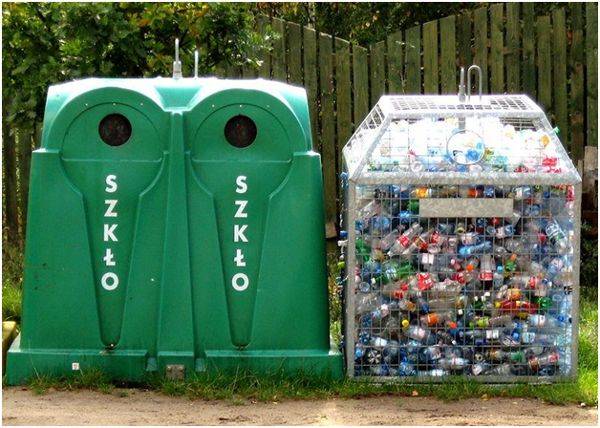
Futuristic containers for different types of containers, batteries, clothes, shoes, paper and plastic are installed in the Czech Republic. Most residents here have three sections in buckets (plastic, paper, mixed waste), and each house has corresponding bins. Walking around the city, you will notice glass tanks of different colors.
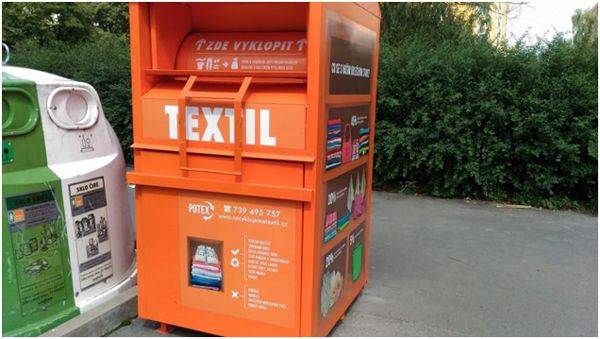
The closest neighbors, the Republic of Belarus, have also been practicing solid waste separation since 2009. The system of containers installed in Minsk made it possible to collect almost ten tons of garbage already in the first year of the program, and over the past time the figure of the annual "harvest" has increased several times. All this is sent for processing. There are collection points for batteries and light bulbs, but there are no recycling facilities for them yet.
An informative video about why it is important to separate garbage and what to do if there are no separate collection containers within walking distance:
The recently adopted law means that soon we will have to separate the garbage one way or another, it is worth starting now. The state can take advantage of the experience of separating solid waste in other countries, but the responsibility lies with individual people. It's no big deal about throwing plastic to plastic and paper to paper.
Pros and benefits of separate collection
The principle of waste separation can make life much easier - both at the level of individuals and at the state level. In countries where waste separation has been practiced for a long time, there are “environmental incentives” for individuals and businesses: you can get a discount on utility services or, in the case of industries, subsidies and tax breaks.
In the case of individuals, the benefits are more moral than material - the opportunity to feel their contribution to the purification and preservation of our planet, to feel their own usefulness. However, the material component is also present: in many countries, the delivery of separated garbage will allow you to earn a little extra money.
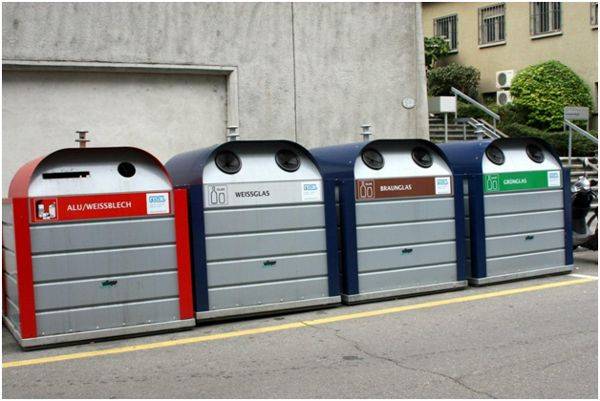
On a national scale, initial sorting of MSW is also beneficial. Firstly, it creates additional jobs at processing plants, in the transportation of waste. Second, it saves non-renewable resources like oil and natural gas, from which plastic and most of the synthetic fibers are made.
For the state, there is no longer the need to give large areas for landfills and landfills, the appearance of urban and rural areas, the stability of ecosystems, and the attitude of that part of the electorate that is interested in environmental problems are improving.
Interesting publications
Time to pedal
During the quarantine, there are fewer cars on the streets of cities - people increasingly prefer personal and ...
Anna Kosnikovskaya
27/05/2020
How to make your pets sustainable
In 2018, 52.6 million cats and dogs lived in the homes of Russians. Pets are full-fledged ...
Irina Skipor
Tatiana Konopleva
27/05/2020
Shops and restaurants are switching to eco-packaging. What's wrong with her?
Yandex.Eda, Lenta, O'Key, Russian Railways and other companies are trying to switch to more environmentally friendly materials. This is required ...
Irina Skipor
19/05/2020
Bioplastics guide
From the guide you will learn: - what types of bioplastics are there; - how to find bioplastics by ecolabelling; - are they recyclable ...
Antonina Evteshina
19/05/2020
Are all the plastic I use recyclable?
No plastic container can be recycled into exactly the same plastic container. Under ideal conditions, only aluminum and glass can be recycled endlessly. Firstly, with every recycling, the quality of the plastic decreases.Secondly, new additives are added to it, which cannot be separated and which, during processing, can release toxic substances. Ultimately, plastic is always recycled into something that, after serving its time, can only be sent to landfill or incineration.
The most recyclable plastics are labeled 1 (PET) and 2 (HDPE).
Other plastics are either toxic (PVC) or difficult to recycle due to non-separable additives (PP).
At the same time, plastic in categories 2, 4 and 5 is considered safer for health than plastic in categories 1, 3, 6 and 7.
The code on the package (with arrows) does not mean that:
- a similar product can be produced from this product;
- this category of plastic is accepted for recycling at your nearest collection point;
- this plastic is safe for health;
- all plastic with the same marking has the same composition.
About items and containers
Household waste sorting is the first step in waste recycling. Manufacturers produce compact containers with several compartments that can be conveniently mounted under the countertop. These can be tanks, plastic containers, waste bins. Separate waste is taken out in special containers installed for each group of houses. They differ in color, on some tanks the category of scrap is written (plastic, glass, paper). Depending on the service operator, mesh baskets, bins under awnings, bins for separate waste collection are mounted on the street in specially designated places.
In European countries, the following labeling of containers is adopted:
- Glass is collected in green containers.
- Blue tanks for prints.
- Yellow containers for paper, cardboard.
- Organic, compost - black containers.
- Hazardous residues go to brown bins.
- The plastic is thrown into an orange container.
On the territory of Russia, color coding is not always used to separate garbage into containers, but the containers have corresponding images and inscriptions. You can hand over your garbage to a collection point yourself. The nearest object is found on the Recyclemap or on the Greenpeace website.
Collection at home
Food residues are separated from the rest of the garbage immediately. There are always more of them, you will have to take out the bucket more often. Therefore, it is convenient to equip a separate container with a garbage bag for food waste, and store the sorted waste in functional containers with several compartments.
To make paper, plastic, aluminum take away a minimum of free space, the garbage is carefully tamped. Containers from all food products, drinks are immediately rinsed. It is convenient to collect waste paper in a large box or in a vertically suspended sack.
Installation of containers in the yard
Residents of multi-storey buildings have the right to hold a meeting of owners in order to resolve the issue of separate collection of garbage. You can motivate residents by talking about the benefits of recycling, about the inefficiency of mixed waste collection. After the meeting, it is necessary to contact the management company with a proposal to install containers for RSO in the local area. Alternatively, you can enter into an agreement with an operator who takes out garbage from the courtyard of a multi-storey building.
Dispose of separated waste yourself
If there are no separate waste collection containers nearby, you can hand over the sorted waste to a collection point yourself. First, the nearest object is found on the map, the work schedule and the categories of waste that are accepted on the company's website are specified.
Cons and problems of separate collection
One of the main drawbacks is the rather slow payback. Processing enterprises take a long time to "recoup" investments, so for small businesses this area is practically unaffordable without consolidation or government subsidies.
The cost of equipment for processing remains high even without the inclusion of automatic sorting lines, and it is much more difficult to find workers for this area than in an office - it is not prestigious.
Another stumbling block is the irresponsible attitude of people and their unwillingness to create additional work for themselves. It is much easier to throw out all the garbage in bulk, without thinking about where it will go later. On the other hand, there is a certain distrust of the authorities and processing enterprises: “divide, do not divide, everything is the same - it will go to the landfill in the same way, we are not doing anything right”.
What non-obvious waste cannot be recycled and why?
Non-obvious waste that cannot be recycled:
- paper cups;
- candy wrappers;
- glossy paper covered with a thin layer of film (tear off the edge to check):
-
- wrapping paper with glitters and plastic decorative elements, as well as with the remains of scotch tape;
- paper or cardboard soaked in liquid or food (food debris contaminates raw materials and can make it unsuitable for recycling);
- PET bottles made of vegetable oil (oil penetrates the pores of the plastic, which prevents efficient processing).
If at the waste collection point, for example, only a bottle, a bottle and a canister are drawn on a container, and other types of plastic containers are not depicted, this is not accidental. In sorting production, some optical sensors react to large elongated objects and do not work "when they see", for example, yogurt cups, so they may be prohibited from delivery (to check, read the instructions for recycling on the website of the operator of your collection point) ...
How to sort the junk correctly
The main rule of RNO is that you must not mix solid household waste with food residues. They must be immediately collected in a separate compartment of a container or a bucket, taken out into a common tank / garbage chute / sewer.
In order not to turn your house or apartment into a garbage collection point, you should adhere to simple rules:
- Equip a container with several compartments by placing it under the sink.
- Collect the plastic separately according to the marking on the product (in Russia, no. 3, 7 is not accepted).
- Twist the caps from plastic bottles, store them separately from the container.
- Rinse containers from residual contents, press thoroughly to save space.
- Collect glass and aluminum in one container, separate at the reception point, do not mix ceramics with glass.
Non-recyclable, non-sorted residues are collected in a trash bin, lined with a bag, newspaper, bag. Prepared waste is thrown into special colored containers with markings or inscriptions.
Advantages
Recycling is an approach to using waste for the benefit of humanity. Until now, there are supporters of the theory, which is based on the denial of the modern approach.
For the environment
The main benefit of harvesting is preserving the environment. Large-scale deforestation for paper production is carried out annually. Recycling of waste can reduce cutting requests.
Some schools in Europe and America are fundamentally abandoning the use of paper for the creation of teaching aids, switching to electronic versions, and also positioning the use of only secondary raw materials.
Financial component
Manufacturing products from recycled materials uses less energy than manufacturing from scratch. This factor saves industrial costs.
Recycling of raw materials
The benefit lies in the fact that it allows you to reduce the cost of goods without losing quality. The use of recycled goods is diverse.
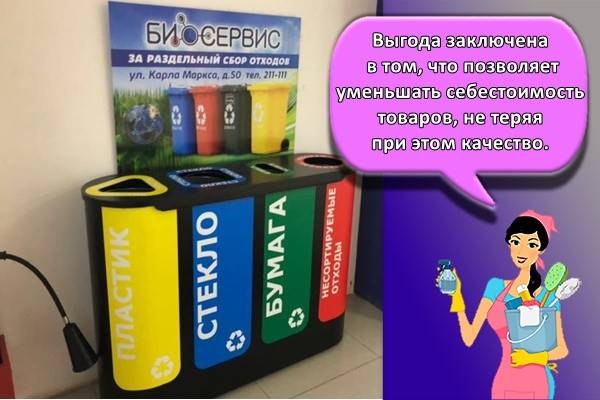
Elimination of landfills
The system for converting waste into consumer goods helps to significantly reduce the area of landfills.
Landfills are hazardous to the environment for a number of reasons:
- the greenhouse effect leads to a deterioration in air quality;
- harmful particles from buried and waste waste get into the water that is used for consumption by the population;
- putrefactive processes develop at garbage dumps, which negatively affect the flora and fauna of a particular area.
How it affects the country's economy
Garbage collection and disposal is a separate line of expenses that is constantly monitored by government agencies. The garbage reform shows that the regulation of the recycling problem requires investment from the state. At the same time, managers understand that establishing a recycling system will lead to building a system that will benefit the country's economy.
How is garbage disposed of in other countries?
Abroad, compost (fertilizer) is made from organic waste, converted into biogas, which can be used to generate electricity, heat, and also as fuel for cars.
But back in early 2017, the Council of Europe recommended the European Commission recommends that countries refrain from building waste incinerators to refrain from building new incinerators and develop the recycling industry.
Examples of effective waste reduction are known all over the world. For example, in the Japanese city of Kamikatsu, 80% of household waste is recycled. Residents divide them into 34 types. Local authorities have set a goal to reduce the amount of landfilled waste to zero by 2020.
This is how the residents of the sleeping area of Tokyo collect waste.
How waste is disposed of from different containers
The problem of waste disposal is an acute problem for modern industrial companies and ordinary residents of megacities. Numerous garbage dumps significantly spoil the look of the adjacent territories. The waste collection system makes it easier for the companies responsible for the collection. But the rules have not been worked out to the end. At any stage of the work, violations and failures are possible.
According to the type of origin, waste is divided into groups:
- From production. This group includes various wastes from the production of furniture, household items. Homogeneous compositions that do not require additional selection are recognized as garbage from production.
- From consumption. Household residues are a mixture of different materials that differ in physical and chemical properties and are not homogeneous.
Solid municipal waste, or MSW, is divided into 5 hazard classes. To start recycling, the company needs to determine the hazard class and obtain a passport in accordance with the Rospotrebnadzor standards.

The companies with the obtained license are responsible for the removal of waste from 1 to 4 hazard classes. They have the right to collect, store and dispose of garbage. Waste disposal is carried out by the next link in the order, which is responsible for this. Garbage, according to the rules and norms established by the legislation of the field of natural science, is subject to one of the actions:
- Recycling. Export is carried out on the territory of processing plants.
- Burial. After processing and neutralization of materials, they are buried in landfills designated for this.
- Burning. After filtration and removal of flammable and explosive materials, combustion is started using roasting and multi-chamber furnaces.
Calculation of sizes and quantities
For residential areas, the number of containers is calculated by the waste disposal companies.
The main indicators are:
- the average annual volume of waste accumulation (in cubic meters) for an apartment building;
- dimensions of the waste bin;
- the frequency of waste removal during the day.
To calculate, use the algorithm:
- The volume of 1 container is multiplied by the frequency of waste disposal during the day.
- The average annual volume is divided by the resulting product.
- The result is corrected (multiplied) by the coefficient of uneven filling with garbage and the coefficient of validity.
The coefficients are const .: Knzm = 1.25; Kg = 1.05. (The expiration factor takes into account the breakdown of containers and the need for replacement).
If there are few processing plants, then does it make sense to sort the waste?
Sorting (at home) and separate collection (at the collection point) is the only civilized way to handle the waste generated. Without separate collection and processing of waste, irreplaceable resources extracted from the subsoil fall out of the production cycle.
The main number of sorting and waste processing plants are located near the landfills for a reason: part of the mixed (that is, not sorted) waste is still subjected to some sort of sorting. However, the likelihood that the container you send to the general - mixed - waste will be sorted and recycled is close to zero.
Mixed waste ends up either at an incineration plant or at a solid waste landfill. In the first case, the energy received from their utilization compensates only for the energy spent on this very utilization. In the second case, inorganic waste simply accumulates, and organic waste partially rot (slowly, since the landfill is like a large tin can), releasing landfill gas. This gas is a mixture of methane and carbon dioxide and not only smells terrible, but is also harmful to human health and, being a greenhouse gas, to the environment.
Myths and reality
There are many myths that separate collection is not promising. Many people think that there are no processing plants in the country at all. In fact, this is not the case - there are factories, but they are not working at full capacity and are underfunded. With the proper organization of the process of collecting municipal solid waste (MSW), such plants can bring good profits.
Rubbish takes up a lot of space - wrong statement. Modern Euro containers are very compact, each designed for a specific type of garbage and takes up little space, no more than conventional containers. The volume of the euro container for garbage can be different, the most common are 1500 and 2500 liters. Such tanks are suitable for installation in residential yards and in industries and take up a little free space.
The Euro trash tank is expensive - that's not true. Such containers are not much more expensive than conventional containers and pay off very quickly, since separately collected waste is easier to recycle and requires minimal costs.
Separate collection does not work - then everything goes to one landfill. It is not true. Investments are needed to organize a separate collection, but why make them if it does not bring profit? If a separate collection is organized, then it is brought to the end - waste recycling and profit.
Separate waste collection in Russia
One of the reasons why waste sorting and production from secondary raw materials are not put on stream in Russia, as, for example, in Europe, is the high cost of processing compared to the low cost of disposal. For European scavengers, a ton of solid household waste taken to landfill costs 1,000 euros, and for Russian - only fifteen.
Legislation
Waste separation legislation in Russia is just beginning to emerge. So, on December 31, 2017, the president signed a law on the introduction of separate waste collection and the provision of incentive measures. The article of the law amended to the federal legislation in the field of industrial and consumer waste comes into force on January 1, 2019.Since January 2018, many categories of waste are prohibited from being buried at landfills. Previously, a separate license was required to install waste separation bins, now the procedure has been simplified. This allows us to hope for the development of a waste separation and recycling system in Russia.
The law also regulates the placement of waste processing complexes - now, for their arrangement on the territory, a resolution of citizens living in this territory will be needed.The placement of bins and garbage disposal will also need to be approved at meetings of homeowners and management companies.
Prior to the adoption of these laws, the initiative was mainly raised from the bottom - from the side of environmental activists. Since the 2000s, Greenpeace Russia has been carrying out projects for the separation of solid waste in certain districts of Moscow and St. Petersburg, actions at which it is possible to hand over the separated waste from any area.
Separate waste collection points
Finding separate waste collection points in the city or area where you live is quite simple: most of them are official organizations marked on maps. Any search navigation system will help here - Yandex, Google, DublGis, although information about addresses, phone numbers and opening hours there is sometimes updated out of time.
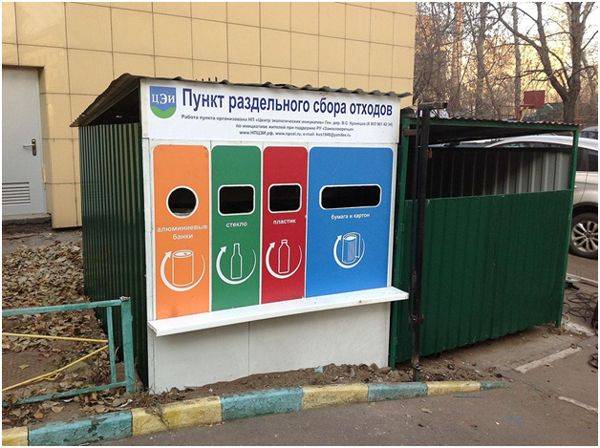
On the Greenpeace website, you can use an interactive map (
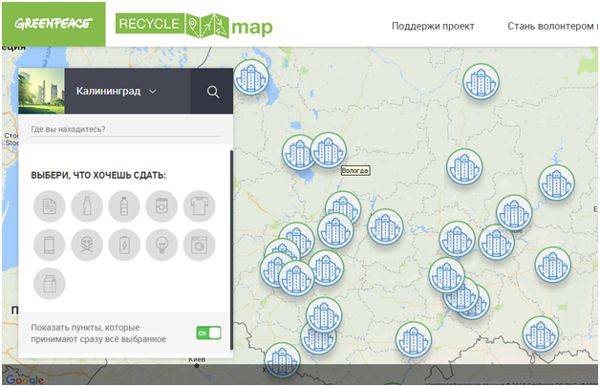
The card is convenient in that it is possible to establish what type (or several types) of waste needs to be handed over, and to get the address of collection points in the issuance of addresses:
- paper;
- glass;
- plastic;
- metal;
- clothes;
- hazardous waste;
- batteries;
- lamps;
- household appliances;
- tetrapack packages;
- other waste.
Separation of solid waste is practiced at home and many chain stores: collection of batteries, disposable containers. Tanks for different types of waste are installed at the stations of the Russian railways.
Separate waste collection projects
Separate waste collection projects are systematically carried out in many large cities - apart from Moscow and St. Petersburg, also in Vladivostok, Khabarovsk, Perm, Tula, Kirov, Novokuznetsk, Ulan-Ude and others.
Separate waste collection at the enterprise
Even more than in city apartments and private houses, it is advisable to arrange places for separate waste collection at enterprises. Since much more waste is generated there due to the volume of production, there will be correspondingly more income from garbage. And in accordance with the new law, production facilities that are responsible for waste will receive benefits.
For most organizations, the transition to a solid waste separation system will be much easier than for individual people, if only because, due to fire and biological safety requirements, many of them have long been storing different types of waste separately. For example, oiled rags or sawdust, according to fire safety requirements, must be collected in non-combustible containers with lids.
Varieties of containers
The container designation system in a special way helps to navigate the purpose of the container. The dyeing of containers with different colors was invented by Swedish specialists and recognized as one of the most successful practices.
Two-color marking
The use of two colors is a simplified pattern. On the streets in some regions, containers of 2 colors are installed:
- gray: intended for the disposal of organic waste;
- blue or orange: suitable for dry solid objects.
Four-color marking
The use of four colors makes sorting easier for operators. On each tank, in addition to color, there are icons and inscriptions that help not to confuse the type of container:
- blue: for paper, cardboard, prints;
- yellow: intended for metal objects;
- green: glass is thrown here;
- orange: used for plastic waste.
Mesh containers
This type of tank is for disposing of plastic bottles. Plastic bottles of any size can be put through the coarse mesh. A small amount of material is used to create a mesh container, which reduces the costs of waste recycling companies.
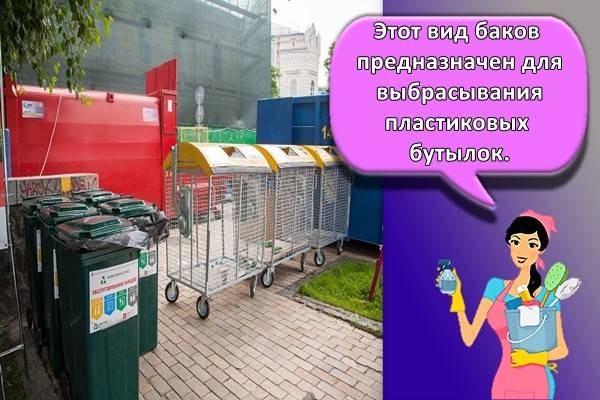
Reception points in settlements
Not all cities have collection points for such waste. There are many of them in large cities, but in small settlements they may be completely absent. To find out if there are such reception points in your city, call the ZhEK.Regional authorities are responsible for organizing separate collection. The nearest points can be found on the Greenpeace website. There is a special map on which the points are marked. In large cities, there may be several of them, but in small ones they are absent, because so far this is a rarity, because the law has not been implemented at the federal level.
If there are no such items, you can contact the regional authorities or the State Duma. Involve homeowners, utilities in the problem. The more people and organizations you attract, the faster this problem will be solved and trash cans will be installed in the yards.


